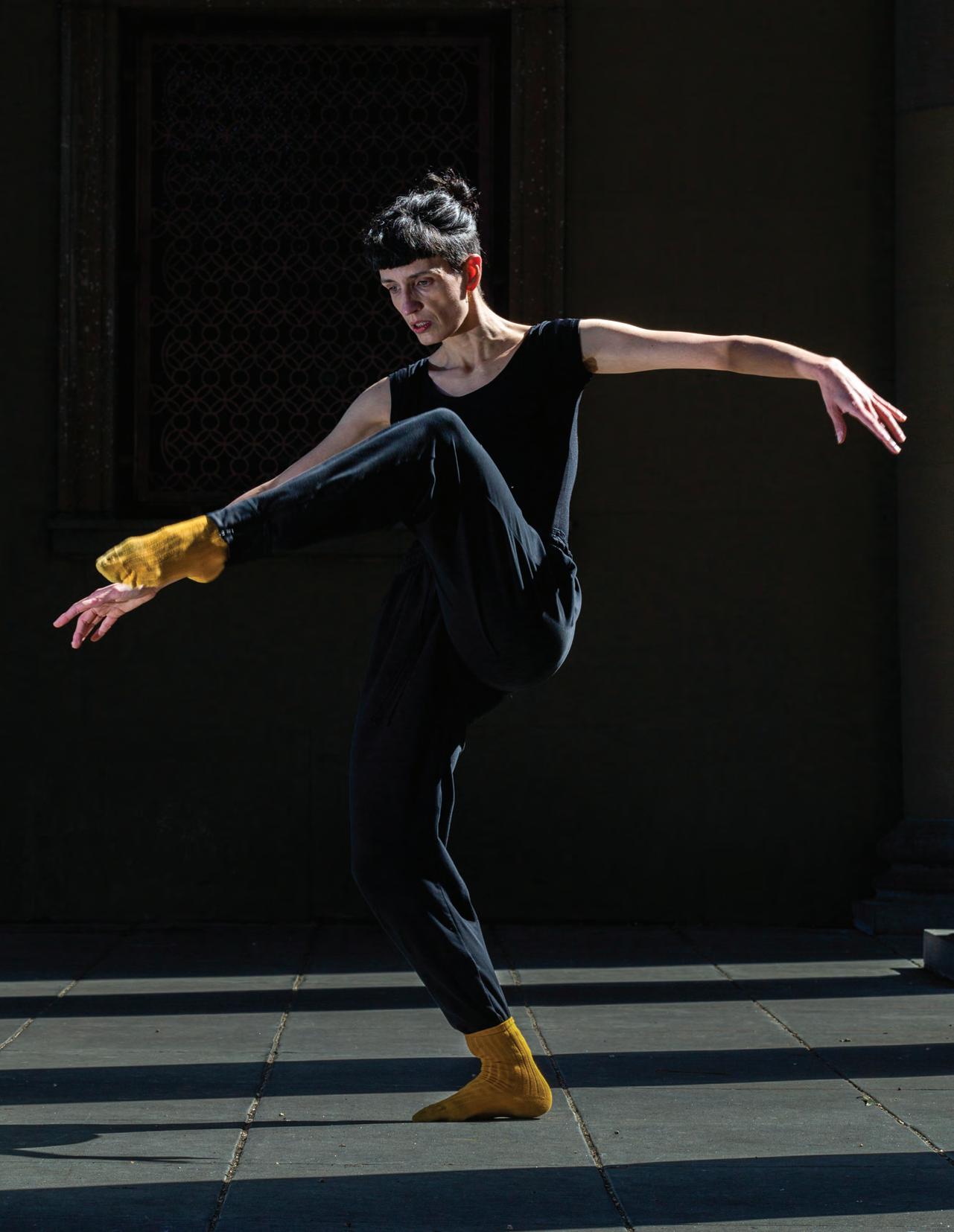
CHANCELLOR QUARANTINED CREATIVES The never-ending story Virtual art in a pandemic crisis City College of San Francisco | Spring 2021




CONTENTS 07 24 29 12 Spring 2021 Art Finds a Way Through Her Eyes Taking Stock of GameStop 86’d - Cooking Up Solutions City College artists adapt tangible mediums to remote learning during the pandemic Women of color diversify the workplace in front of and behind the camera How an underground troop of retail investors disrupted Wall Street Chefs adapt to survive changes in the service industry
Here We Go Again
Board of trustees postpones the chancellor search in face of a looming budget deficit
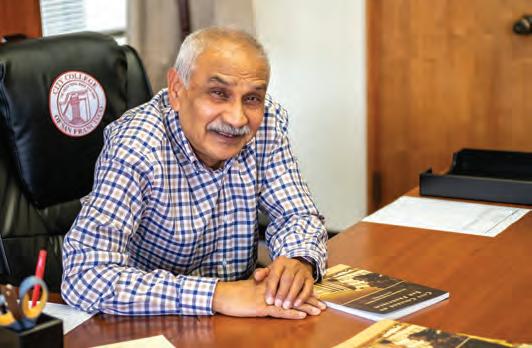
Are You Game?
City College athletes get off the bench and back on the field

Co-Editors-inChief Abraham Davis Emily Trinh
Chief Copy Editor Justin Vuong
Content Editor Megan Ogle
Design Director Jasmine Castillo
Designer Aspen Hasse
Illustrator Bobby Ramirez
Assistant Photo Editor Bo Lenschau
Open Doors, Open Minds
Libraries make their services available during the pandemic

Staff Writers & Photographers Elizabeth Aranda
Connie Chu
Xiaofan Fang
Kevin Kelleher
Melvin Wong Adviser Jessica Lifland
Spring 2021 1 33 16 03
On the Cover: Photo by Emily Trinh for Etc Magazine. Dance student Yosune Camio practices a ballet routine on the side of the Music Concourse in Golden Gate Park.

Back Cover:
Design by Hongyue Zhao, Emerge Studio/Design Studio Practicum Visual Media Design Department.
Special Thanks:

Etc Magazine would like to thank Colin Hall, John Seckman and Lorraine Leber’s design students for submitting their back cover promo ad designs, our printer Sanjay Sakhuja with DPI Printing and Camera Bits who supplied us with Photo Mechanic.
About Etc Magazine:
Etc Magazine is an award-winning student publication. It is written, edited, photographed, illustrated, designed, produced and distributed by students enrolled in the journalism program at City College of San Francisco.
The magazine is devoted to fair and objective reporting. We cover the important issues facing the college, its students, faculty, staff, administration and the surrounding community. Any opinions expressed in the publication represent the views of the students who authored them. Etc does not purport to represent the views of the school’s administration. The magazine comes out twice a year — once in the spring and again in the fall.
Editors’ NotE

Davis: When we had to move the Etc Magazine class online two semesters ago, we were unsure if we would still be able to produce a magazine, let alone one that met the standards set by previous staff. Due to the hard work and dedication of my peers that semester, we somehow did publish a magazine, and a fine one at that.
Two semesters later, the online class feels as familiar to me as the in-person one. I am lucky to have a great team of writers, photographers, designers and fellow editors. The process went smoother than ever.
Trinh: Many of my friends and instructors from City College are fighting to stop the eradication of courses and departments as mass faculty layoffs continue. Having transferred from a for-profit university where students’ well-being and success is the lowest priority, I am disturbed to see this sanctuary of an institution face repeated threats of shrinkage and corruption.
Of my three semesters with Etc Magazine, class cuts have been a heated subject. Our writer and Co-Editor-in-Chief Abraham Davis continues the discussion about mass lay-offs and City College’s search for a new chancellor in his article “Here We Go Again” with photography by Bo Lenschau, Kevin Kelleher and myself.
Elizabeth Aranda zeroes in on the City College art department’s effort to teach and learn dance, painting, and ceramics through Zoom in her story “Art Finds a Way.” Co-Editor-in-Chief Emily Trinh and Kevin Kelleher photographed for the story.
Justin Vuong returns, now as chief copy editor. He writes an engaging explanation of the recent GameStop incident in “Taking Stock of GameStop.” Illustrator Bobby Ramirez once again works his magic to visualize Vuong’s story.
“Are You Game?” photographed and written by Melvin Wong, gives readers a personal look into the lives of four City College athletes as they emerge from the pandemic and back onto the field.
Next, Xiaofan Fang takes on the challenge of writing and photographing her first magazine article in “Through Her Eyes.” Her story sets a positive tone for the future of an industry that is traditionally dominated by white males.
Returning writer and content editor Megan Ogle nails it again with “86’d - Cooking Up Solutions.” Ogle focuses on the toll that the pandemic has taken on the food industry. Photographer Bo Lenschau takes us into the kitchens where the magic happens.
In “Open Doors, Open Minds” Connie Chu shows readers how City College and San Francisco’s libraries found creative ways to ensure that everyone who needs their services has access to them. Kelleher also photographed Chu’s story.
All of this work would be for nothing without our two designers Aspen Hasse and Jasmine Castillo. After designing two award-winning layouts for us, Castillo created an amazing template for future issues. Combined with Hasse’s attention to detail, the finished product is truly special.
Our fearless leader and adviser Jessica Lifland empowered and pushed us to produce the best content we could. She is the backbone of this award-winning publication.
Going beyond these impactful stories, the magazine in your hand is a physical manifestation of our passion for storytelling and perseverance. We hope you find as much pleasure exploring these pages as we had producing them.
Abraham Davis, Co-Editor-in-Chief Emily Trinh, Co-Editor-in-Chief
2 Etc Magazine
CHANCELLOR QUARANTINED CREATIVES The never-ending story Virtual art in a pandemic crisis City College of San Francisco Spring 2021
HERE WE GO AGAIN
Board of trustees
postpones the chancellor search in face of a looming budget deficit
Story by Abraham Davis
Photography by Emily Trinh and Bo Lenschau
And just like that, City College of San Francisco is again in need of a permanent chancellor. Previous Chancellor Mark Rocha resigned from the position on March 21, 2020, leaving behind a trail of controversy as well as a gaping and ever-growing hole in City College’s budget deficit. The school’s board of trustees, BOT, must now find a willing individual to take the helm and steer City College through the extreme turbulence that perpetually surrounds it.
Finding this individual is proving to be more difficult than previously expected. The BOT has now postponed the search until July 1, 2021, after closing the initial application pool on March 12, according to a mass email sent by BOT President Shannell Williams on March 16.
“This new timeline also will allow us to recruit more candidates with the executive-level experience and desired qualifications described in our position announcement,” she says in the email.
Care Trust Fund.” The average chancellor salary in California is $316,000. The last City College chancellor salary on record is Mark Rocha’s at $354,000 in 2019.
Other open chancellor positions are also vague when it comes to salary. For instance, in the Kern Community College district chancellor application, the only detail given about the minimum salary range is “Salary is competitive and commensurate with experience and negotiated with the Board.”
Filling the seat “is arguably the single biggest responsibility the board has,” said Tom Temprano, Vice President of the BOT in an Examiner article published in January 2021. “The lack of stability and continuity in that position is a real problem.”
The public posting for the position states that the BOT is seeking “a respected, experienced leader with a strong professional reputation to provide unifying and participatory leadership to this dynamic, complex, urban, and diverse district.”
There is no mention of salary range on the posting. It only states that “Total compensation includes a health insurance plan,” and “New employees hired on or after Jan. 1, 2014 will contribute 2% of salary to the San Francisco Retiree Health
He makes an important point. For over a decade, City College has been unable to hold a permanent chancellor for longer than four years. This trend began in 2008 after Chancellor Philipp Day pleaded guilty to three of eight felony charges, all surrounding the misuse of public funds and illegal campaign contributions.
According to an article published in the Examiner in September 2011, prosecutors accused Day “of illegally diverting about $100,000 of money to fund political campaigns for measures benefiting community colleges in 2001, 2005 and 2006. He also was accused of maintaining a secret account to pay for parking

“Without placing blame on either side, I think there is a level of trust that needs to be built up.”
— Alan Wong
Spring 2021 3
The City College chancellor’s office is in Conlan Hall on Ocean Campus. (Bo Lenschau/Etc Magazine)
According to an article published in SFgate in March 2012, Day was fined $30,000 and sentenced to a five-year probation. He had served as chancellor of City College from 1998–2008.
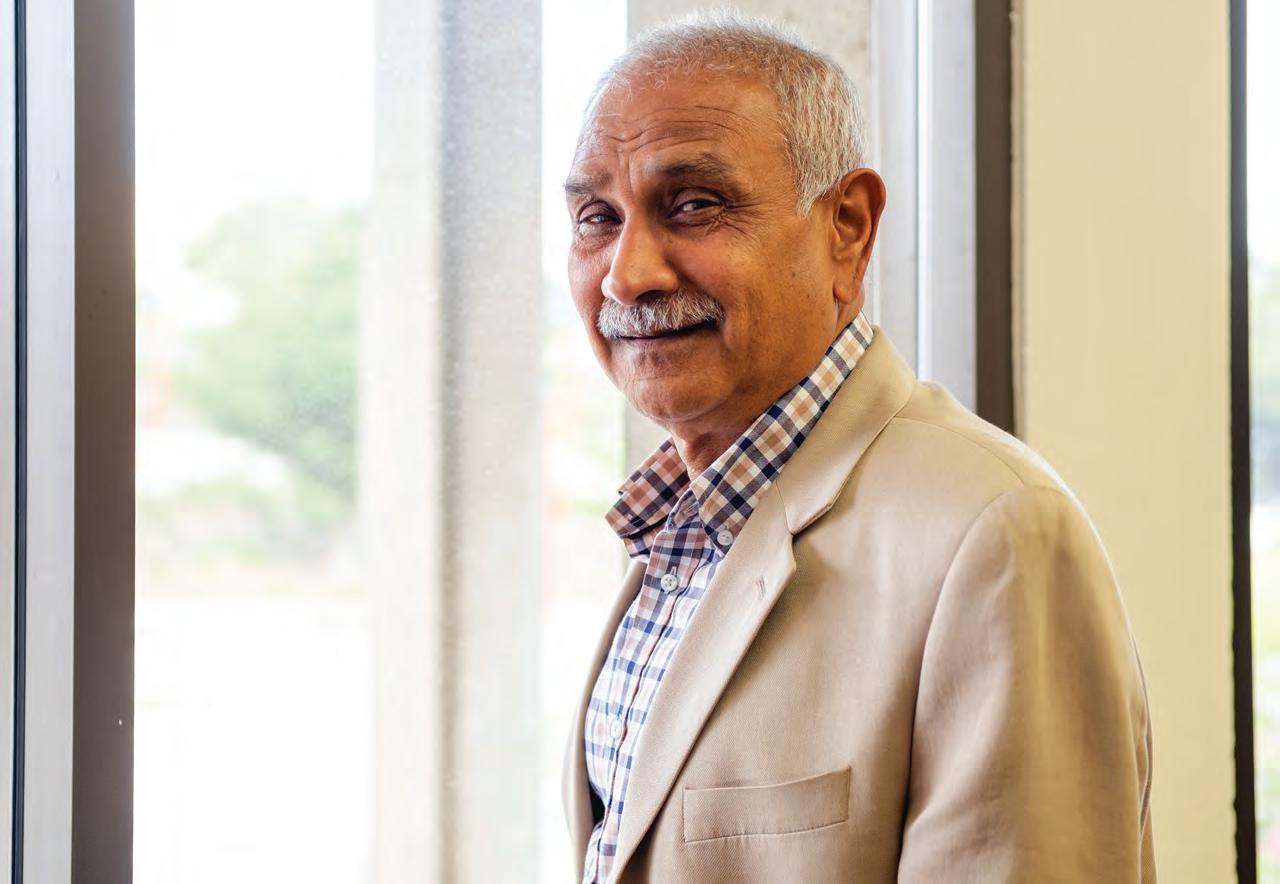
Day was followed by Chancellor Don Griffin. Griffin was dealt a tough hand. He was not only given the responsibility of renewing City College’s reputation, but he also had to navigate the college through the 2008 economic crash.
He had to make difficult decisions, including cutting many part-time classes as well as summer school for an entire semester.
Griffin departed from the college in 2012 and while applauded for the work he had done, he left the school still struggling to
maintain a balanced budget. In an SFgate article published in 2012, English instructor Alisa Messer said of Griffin, “He’s done the best he can do in a tremendously difficult situation to try to serve students and protect employees at the college.”
Between permanent chancellors, the BOT placed Pamila Fisher as interim chancellor. In this period, the
A couple months after the announcement, Art Tyler was named the new permanent chancellor of City College. Tyler was a former president of Sacramento City College and had also served as a state-appointed trustee at Compton College, another community college riddled with accreditation issues.
Accrediting Commission for Community and Junior Colleges, ACCJC, sanctioned City College under a Show Cause status and required that the college prove why it should remain accredited. On July 3, 2013, the commission announced its plans to revoke City College’s accreditation.
Tyler would end up resigning. He was reassigned to the facilities department 19 months after his initial hire when it was revealed that he had spent a third of his tenure as chancellor off-campus, traveling and dining at high-end restaurants, letting the college pay for the expenses.
After Tyler came Interim Chancellor Susan Lamb. She held the position for two years, an unusually long time for an interim chancellor, until in 2017 the BOT, in their great wisdom, hired Mark Rocha.
4 Etc Magazine
“Unless we can stem the bleeding right now and plan for the next four years, there will be serious problems.” — Rajen Vurdien
Interim Chancellor Dr. Rajen Vurdien poses in his office in Conlan Hall on Ocean Campus. Vurdien now plans to step down in October. (Emily Trinh/Etc Magazine) tickets, alcohol at functions and a membership at an exclusive business club.”
In his three years as chancellor, Rocha managed to cut 1,400 classes and 300 teaching positions. This included the “midnight massacre” when on the eve of spring 2020 registration, he cut 345 classes without giving advance notice to teachers and students.
These cuts were made in order to address the budget deficit, which at the time was around $13 million. That huge deficit now looks like small-fry. On March 9, 2021, City College released an official statement on the school’s 2021–2022 budget. “The existence of the College is at stake,” read the statement. “The College is facing a budget shortfall that is projected to be $33 million for the 2021–22 Fiscal Year.”
The statement mentions that to address this budget shortfall, City College has already issued preliminary layoffs to 163 faculty members and 34 administrators.
“A new chancellor won’t solve our budget problems,” says trustee John Rizzo. He has been on the BOT for 10 years and previously held the position of vice president as well as president of the board.
The turnover rate for chancellors at City College is higher than most other California community colleges. A study
done by the Community College League of California, CCLC, published in August 2018, found that over the 10-year span from 2008 to 2018, the average tenure of California community college chancellors was five-and-a-half years.
This was down by two years from the previous study that looked at the average tenure of California chancellors from 1998-2008. Day was City College’s
public scrutiny is more severe (than in other places).”
Wong, who was endorsed by City College’s faculty union, the American Federation of Teachers, (AFT) Local 2121, says that the traits he prioritizes when looking for a new chancellor are “fiscal oversight, inclusivity and transparency.”
chancellor during that entire 10-year span until he had to resign due to his felony misuse of City College funds.
The average tenure for permanent City College chancellors since Day stepped down has been three years. This turnaround does not inspire confidence.
New trustee Alan Wong understands trust between faculty and administration is not at its peak. “Without placing blame on either side, I think there is a level of trust that needs to be built up,” he says.
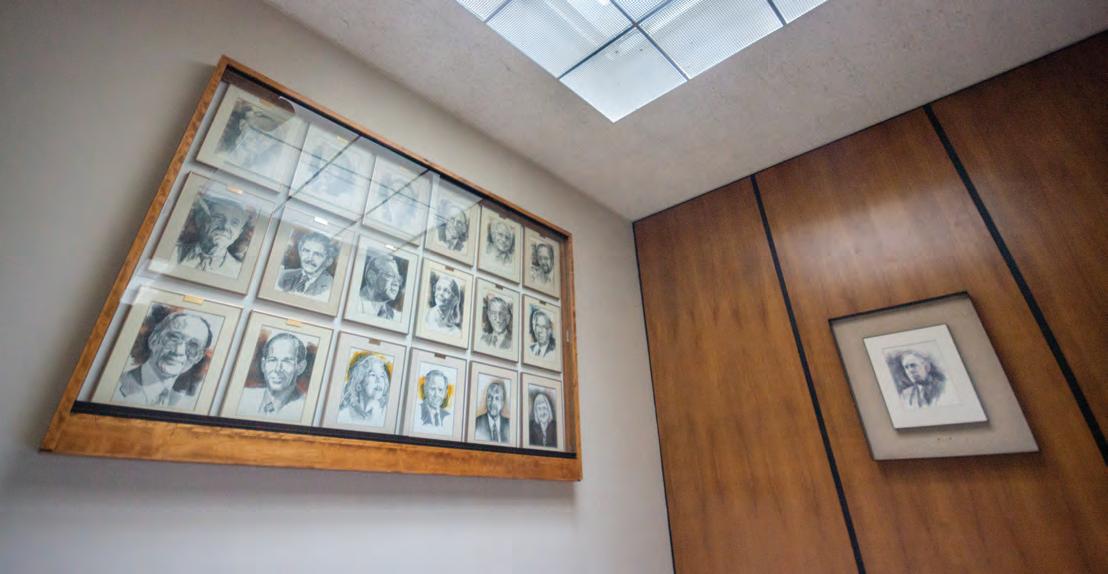
Wong also knows the importance of picking someone politically savvy enough to deal with the heat that comes with the job. “The new chancellor must be prepared for San Francisco, where the
In January, Wong called for mandatory monthly budget updates so students and faculty could see exactly which issues City College currently faces. “The cuts came as a shock to the community and to the BOT,” Wong says. “I think the updates will help us keep on top of the budget and build transparency with the public so everyone knows where we are.”
The BOT placed Rajen Vurdien as interim chancellor in July, 2020. The plan was for Vurdien to step down after a year and for a new chancellor to officially start July 1, 2021.
Now according to William’s recent email, “It will be in the best interest of the district to suspend the search at this time and reopen it July 1. This will allow us time to work through the critical decisions we must make to balance our 2021-2022 budget to maintain our
Spring 2021 5
“A new chancellor won’t solve our budget problems.” — John Rizzo
A framed collection of portraits of past chancellors hangs on the wall above the main staircase in Conlan Hall. (Bo Lenschau/Etc Magazine)
accreditation and safeguard the future of City College.”
The email states that the new goal is to have a chancellor ready by Oct. 1. This new deadline will allow the search committee to find more qualified candidates.
In a recent article published in The Guardsman, search committee member Tim Wolfred said of all the people who applied, only nine were qualified. “We like to cast as large a net as possible. With only nine [candidates], you don’t really get that. I’d personally like to see more like 20-25 who meet the minimum qualifications. … You want enough competitive candidates that the one you end up with is going to be a good one,” said Wolfred in the article.
On top of this, there are currently 14 available community/junior college chancellor openings in various districts around California, including in the San Mateo and Contra Costa County districts.
Interim Chancellor Vurdien and his staff have prepared a four-year budget plan for the incoming chancellor to use. “It is a serious situation that the college is finding itself (in),” Vurdien says. “Unless we can stem the bleeding right now and plan for the next four years, there will be serious problems.”
Students and faculty should expect to deal with more heavy blows to class sections as the plan comes to fruition.
“In that plan I recommended the elimination of roughly 600 class sections. I recommended a salary reduction of 15-20%. I recommended the reduction of the workforce,” Vurdien says. He believes this is the best path towards a balanced budget.
AFT 2121 President Malaika Finkelstein wholeheartedly disagrees. “It’s a death spiral. Students leave, workforce shrinks, school shrinks. Cuts engender future cuts,” she says.
Vurdien is aware of the argument that fewer class sections impacts enrollment.
“Some people may say that with fewer sections you will take on fewer students, but that is not true. Currently with all the sections we are offering, we are only functioning at about 76-77% capacity.”
Vurdien’s goal is for City College to function at 96% capacity, meaning classes are 96% full with students.
Finkelstein explains that this is a flawed argument. “The measure of class capacity doesn’t make any sense. The way (the college) decides the amount of students that are allowed to take the class is arbitrary.”
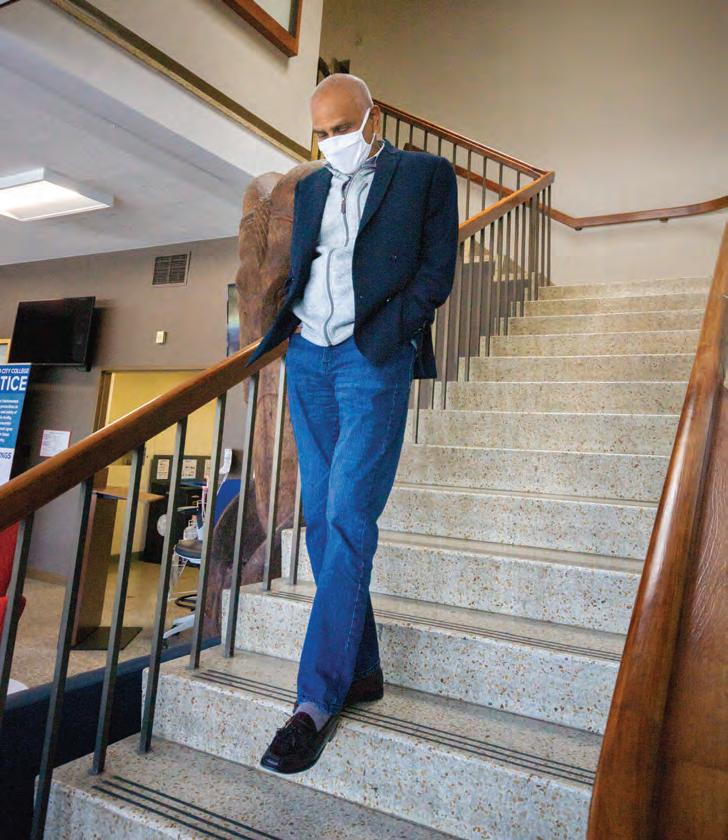
She also points out how this goal will impede City College from adding new classes. “If classes must always be full as soon as they are offered, our college will die.”
Finkelstein wants a chancellor that will fight back against the cuts. “We want someone that serves the actual humans and communities of San Francisco, not the state community college system.”
She believes it is important to find a long term chancellor to solve City College’s thorny budget issues but also does not want the search to be overprioitized. “It’s important to hire someone long term but not so important that we hire someone like Mark Rocha.”
City College is clearly at a fork in the road when it comes to finding a candidate that will be able to please both the administration as well as the faculty and students. Despite their varying views, the parties share a general consensus: City College’s next chancellor needs to stay through the storm and remain on board until the college finds itself in steadier waters.
6 Etc Magazine
“It’s a death spiral. Students leave, workforce shrinks, school shrinks.”
— Malaika Finkelstein
Interim Chancellor Vurdien walks downstairs of an almost empty Conlan Hall. (Bo Lenschau/Etc Magazine)
Dust bunnies gather around locked cabinets full of unused materials. The once bustling studios at City College of San Francisco sit empty as the COVID-19 pandemic moves past the one year mark.
Students used to flock to these creative oases set up for hands-on courses like printmaking, painting, ceramics and dance. They offered a sacred refuge for students to create art and express themselves.

In March 2020, the pandemic closed those refuges, forcing them to suddenly go virtual. Courses that required tangible elements like inkpresses, paint, clay and dance floors moved online. Personal items and supplies were left behind.
A year later artwork still sits in lockers, paint brushes linger in sinks, easels remain shoved against the walls of the painting studios and the springed dance floors collect dust.

The shutdown further impacted an already struggling City College. Former
City College artists adapt tangible mediums to remote learning during the pandemic
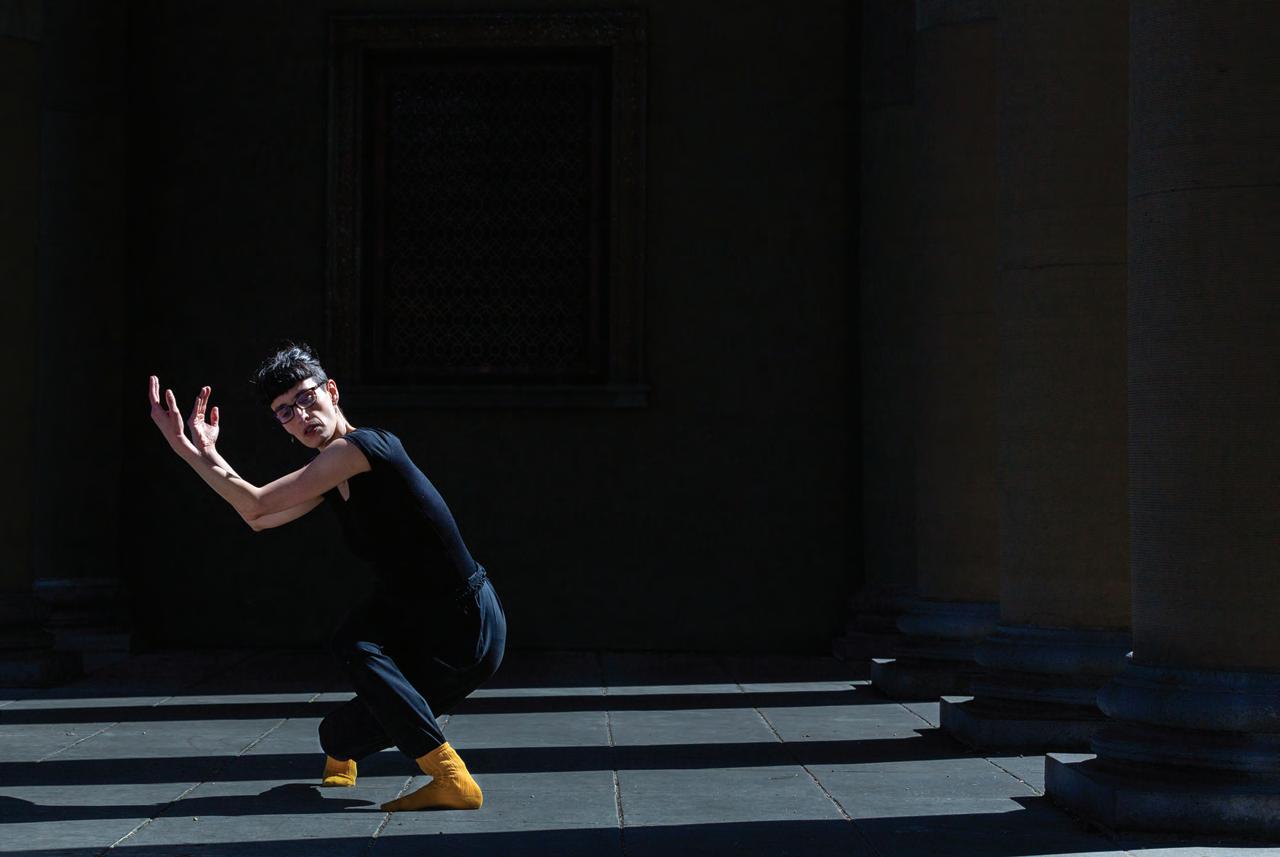
Chancellor Mark Rocha cut over 1,400 classes and over 300 teaching positions during his tenure. The art department, which already ran on a shoestring budget, was cut to a fraction of what it once was.
In 2018, the art department employed 15 full-time instructors and 20 part-time instructors. By the start of fall 2020, the department employed only nine full-time and 13 part-time instructors.
Now in spring 2021, there are currently nine full-time and 15 part-time instructors in the art department. More class and faculty cuts are expected this coming fall.
The dance department, which still includes two full-time and eight part-time instructors, may not exist past this spring semester. All of the part-time faculty have been notified by the department chair that they will have no assignments in fall 2021 because of full time equivalent reductions. Both full-time instructors were issued pink slips on Mar. 3.
“This would effectively mean the elimination of the dance program classes
Spring 2021 7
Dance student Yosune Camio practices a ballet routine on the side of the Music Concourse in Golden Gate Park. (Kevin Kelleher/Etc Magazine)
Pottery designed by Professor Janet Lohr’s students awaits firing outside the Creative Arts Building. (Kevin Kelleher/Etc Magazine)
Story by Elizabeth Aranda
Photography by Emily Trinh and Kevin Kelleher
and certificates,” says Jeanette Male, one of the two full-timers. “We need to support our faculty to maintain the legacy that we have worked to develop over the past 85 years.”
Even though the dance department at City College is smaller due to recent budget cuts, class reductions, and faculty retirements, “We have upheld our standard of instruction,” Male says.
“The cuts are not a reflection of lack of public demand,” says Art Department Chair Anna Asebedo.
“The systemic underfunding of City College is endangering the very existence of its diverse, engaging, relevant, and responsive teaching and service resources.”

When the school went to remote learning in spring 2020, painting instructor Nancy Elliott recalls many of her students saying they would return to art classes in the fall semester. But as the pandemic dragged on and the school remained closed, enrollment shrunk. In spite of the bleak outlook and the lack of tangible resources, some painting students continued to enroll.
They sought ways to adapt to the remote classrooms. Karina Saekow was enrolled in art classes at City College before the shutdown and continued with them during the switch to remote learning. While the transition was difficult, she found a way to make it work. She goes to local parks to complete her drawing assignments and work on her jewelry designs. Getting fresh air and a change of scenery helps stimulate her creativity.
With Zoom classes becoming the new normal, painting instructor Elliott has concerns. “Technology is a barrier for some students,” she says. She finds it more difficult to interact with her students. “They can disappear behind their screens, so I have to work extra hard to build a connection with them.”
Saekow is grateful to City College for the opportunity to explore her creative interests. She remembers loving art in elementary school and dreamed of being an artist as a child. “If I never took the art classes that I did at City College, I would never have realized the potential I had,” she says. Saekow plans to transfer to San Francisco State University this upcoming fall semester to continue her art education.
The instructors tried to make the transition to remote learning as easy as possible, but “The art department had to modify many things,” Elliott says. Like many instructors, Elliott uses Zoom’s breakout rooms for students to help each other, but she feels it is not the best way to teach art.
Students no longer receive feedback in real time. She cannot walk around the studio looking over students’ easels or demonstrate the process of mixing oil colors on a palette before applying them to the canvas. Once the oils are applied, there is little room for correction.
Now students get critiqued only after they have submitted their artwork. They submit their assignments for grading by
8 Etc Magazine
“If I never took the art classes that I did at City College, I would never have realized the potential I had.” — Karina Saekow
Above: Painting Professor Nancy Ellliot looks through her car window while on Ocean Campus. Right: Art student Karina Saekow sits in Golden Gate Park and works on a drawing assignment in which she must study texture. She feels more inspired working outside. (Emily Trinh/Etc Magazine)

uploading them online.
The change has made Elliott realize how much she loves teaching in a classroom. She cannot wait to be back to in-person teaching even if she is unsure of how that will look.
Ceramics instructor Janet Lohr suggests to her students that they use ordinary at-home items like credit cards or forks in place of ceramic tools. “These are good workarounds, but it is not ideal,” she says.
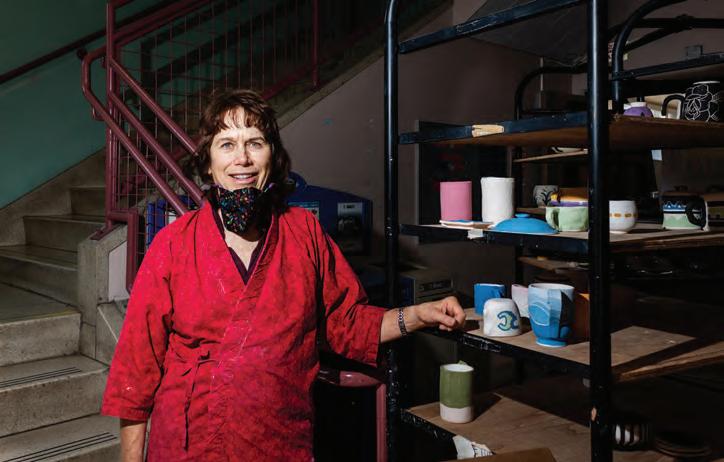
Ceramics need to be fired in a kiln, which students most likely do not have access to outside of the campus
ceramics studios. Lohr arranged a workaround. “Students come to campus a few times during the semester, first to pick up their materials needed for the class, second to drop off their finished artwork to be thrown in the kiln, and then to pick up their work,” she says.
In order to stay safe, everyone wears a mask and keeps a social distance. She takes the ceramic pieces into the enclosed studio to fire by herself before the next scheduled exchange.
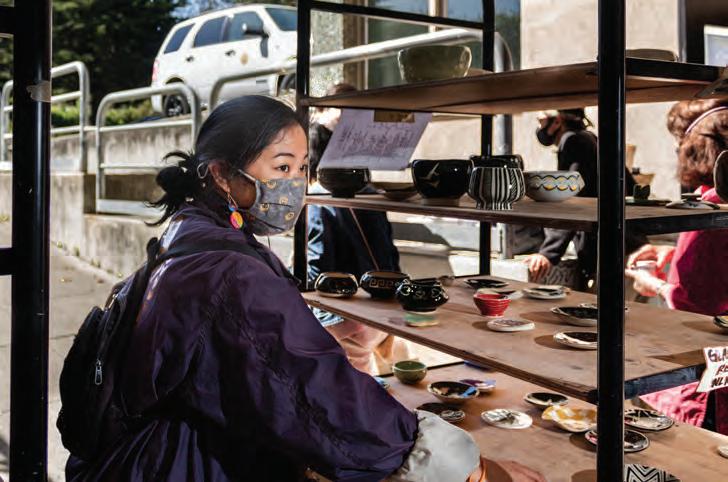
“When I learned that ceramics would be taught on an online platform, I was apprehensive,” says ceramics student Kalie
Taylor. Living in San Francisco means space is tight. “Once I was able to figure out space from the chaos, I dove back into the ceramic making process,” says Taylor.
The dance department students struggle with the lack of a physical space too. “There are things that cannot be done at home. We do not have enough room to ‘travel’ while dancing. Most of us don’t have large enough mirrors to see what we are doing,” says dance student Yosune Camio.
“Dancing on a regular floor really limits what we can do...studio floors are sprung to keep your joints safe from impact.” She worries about injury. “At home, the floor is too hard and it may be too slippery.”
She misses the instructor’s presence too. “In the studio, the teacher can see us all throughout the class and give us corrections, but they cannot see us all properly in Zoom, and it is not realistic to provide extensive feedback for each of us.”
Meanwhile, she tries to focus on the positive and considers herself lucky to have the money to buy at-home dance equipment and the luxury to have enough space in her home to practice in peace.
Printmaking student Araceli Nunez has a similar problem. “I have to figure out how to arrange my home to make space for all the materials I need,” she says.
“In the past year I’ve bought a desk, an office chair, a bookcase, and an LED light, but there is no way I can fit more tools like a print press, a scanner, and a lightbox.” She struggles to find space for supplies like inks, paper and tools. She misses her school locker.
10 Etc Magazine
“When they are having a stressful day and get their hands on some clay, their day goes better. It gives them something positive to focus on.” — Janet Lohr
A student picks up her pottery at the entrance of the Creative Arts Building. (Kevin Kelleher/Etc Magazine)
Professor Janet Lohr stands next to a cart full of pottery that is ready to be picked up by students at the entrance of the Creative Arts Building. (Kevin Kelleher/Etc Magazine) taking photographs with their cell phones or cameras and
At the end of each semester, Lohr has students write essays on how ceramics affects their lives. The responses Lohr receives are heartwarming. Students describe how art has become a salvation for them, a way to cope with the difficulties of life.

“When they are having a stressful day and get their hands on some clay, their day goes better. It gives them something positive to focus on,” Lohr says.
“I never thought I’d be working on ceramics at home, but I have learned so much during this online period. Letting go of my expectations has let me do the best I can,” says Lohr’s student Joanne Chun.
The online version of the class still inspires Chun. “Clay will continue to bring me joy, provide me with balance and encourage my creativity,” she says.
On a sunny spring afternoon at Stow Lake in Golden Gate Park, Saekow sits on a flannel and her jacket. Soaking in the sunshine and enjoying the change of routine from being indoors, she looks down at her artwork. Adding a few more details to her charcoal drawing of tree bark and leaves, she closes her sketchbook and calls it a day.
Now, three semesters in, despite how difficult learning three-dimensional art is through a two-dimensional screen, online interactive art classes are all some students know. Even without the physical studios, they continue to do what they do best — create.
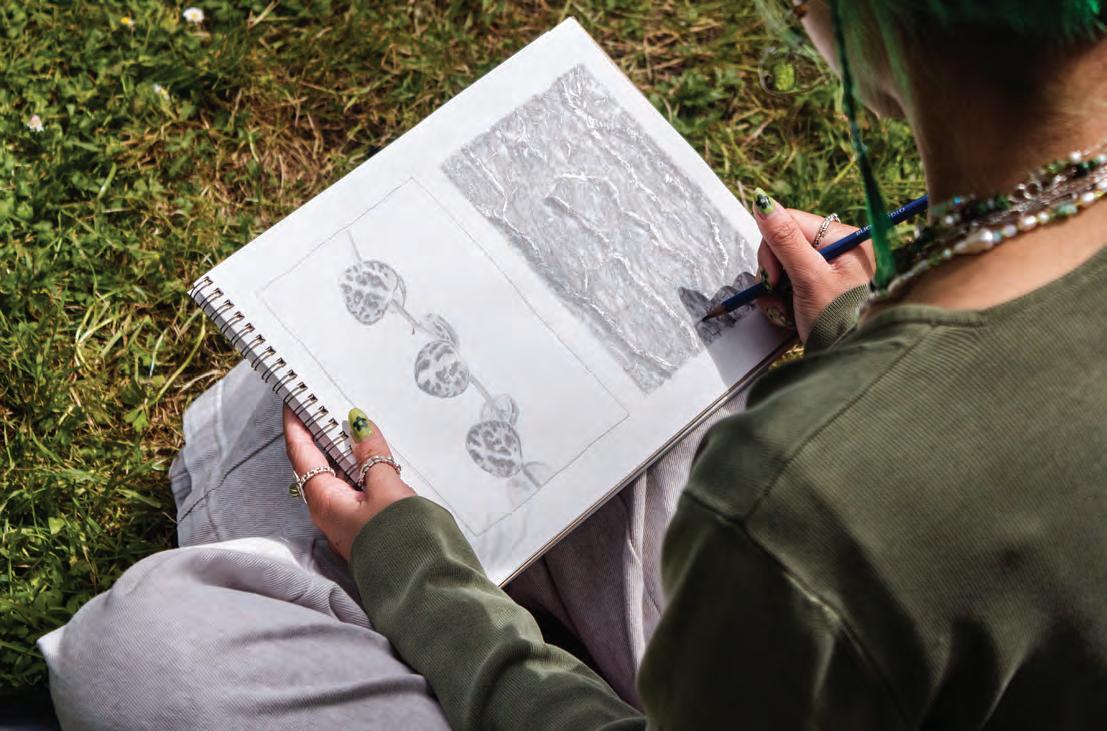 Saekow works on a texture in nature study for a drawing assignment in Golden Gate Park. (Emily Trinh/Etc Magazine)
Saekow works on a texture in nature study for a drawing assignment in Golden Gate Park. (Emily Trinh/Etc Magazine)
Spring 2021 11
Professor Lohr arranges pottery that was dropped off by her students. She will fire the pieces then return them. (Kevin Kelleher/Etc Magazine)
TAKING STOCK OF GAMEST P
How an underground troop of retail investors disrupted Wall Street
Story by Justin Vuong Illustrations by Bobby Ramirez
In the span of one wild week, a sinking video game retailer called GameStop absurdly became valued at $24 billion, twenty times more than Bank of America. GameStop sells physical video game discs in brick-and-mortar stores. In a world going digital, most investors thought GameStop would eventually go out of business.
Instead, on Jan. 27, 2021 GameStop stock (ticker symbol GME) closed the trading day at $347.51 a share, up from $39.12 one week prior. Stories of amateurs making thousands of dollars abounded through social media, inspiring others to jump in and try winning in the stock market.


There are two basic strategies in the markets: long and short. A long strategy means buying shares, waiting for them to go up, then selling them. As the cliché goes: “Buy low, sell high.” A short strategy is the opposite. It means selling shares first, waiting for them to go down, then buying them back. In other words, sell high, buy low.
Individual investor Keith Gill has been a GameStop supporter since late 2019, bucking most investors’ predictions. On Reddit.com, an online forum, he goes by the username DeepFuckingValue. He posted his gains and losses on a Reddit subforum called WallStreetBets. One of these posts featured him wearing aviator glasses and holding a cigar. On his Youtube channel, Roaring Kitty, he uploaded a spoof video titled “Selecting Stocks Based on Feel,’’ explaining how he invests

12 Etc Magazine
in the stock market using a Magic 8 Ball, Uno Cards, Bananagrams pieces, and of course, his feelings. Beneath the antics though, he performed extensive research and seriously considered GameStop a promising investment.

When GameStop exploded, he turned out to be right — or just lucky. The GameStop surge is unusual. Investors typically expect to wait years for a company’s value to double. GameStop’s value soared 888% in a week, and Gill made millions.
“GameStop didn’t suddenly have a huge increase in sales because they started selling a new product that was doing really well,” says Carole Meagher, Professor of Business at City College of San Francisco.
Instead, a new force sparked GameStop’s steep and sudden rise. Coordinating their actions on social media, ordinary people outside Wall Street firms, often referred to as retail traders, whimsically instigated this buying rally. “They were running the stock up and having fun with it,” Meagher says.
Retail investors also targeted the stocks of AMC Theaters, Nokia, and Blackberry, among others. These stocks are called “meme” stocks because Redditors (people who post on Reddit) communicate about them using goofy memes, which are doctored images containing text against comedic backgrounds. The Redditors galvanized themselves around phrases like “Apes Together Strong.” They commonly refer to themselves as apes.
In addition to Reddit, the GameStop price hike is attributed to Robinhood, a stock trading brokerage firm, whose mission is to democratize investing.
Established Wall Street brokerages like Schwab and E-Trade had been charging about $5 per transaction for years through an upfront commission. Starting in 2013, Robinhood pioneered zero-commission trading, which means they do not charge a fee for trading.
Instead, Robinhood makes money by routing customers’ orders to large finance firms to fill. They then pay Robinhood a referral fee of sorts. The firms mark up the orders fractionally, so they profit off each one too.
However, Yrun believes shorting is healthy. “People should be able to express the view that a firm is overrated with the same rights as buyers can express the view that the firm is underrated. That’s ultimate democracy,” he says.

Nonetheless, starting around Jan. 20, when the “apes” of Reddit learned of their short position on GameStop through social media, Melvin Capital became a target. Fueled by mischievousness, greed and a revulsion of the wealth inequality in the United States, which they blamed on

Robinhood markets themselves to individual investors. Offering zero commissions and no account minimums, they make stock trading accessible to “little guys,” ordinary people like City College students who may have only a few hundred dollars to invest. Even the folklore of Robinhood alludes to the theme of stealing from the undeserving rich and giving to the deserving poor.
For many Redditors, the undeserving rich are Wall Street’s large institutional investors called hedge funds. Melvin Capital is a hedge fund that was significantly short GameStop, meaning they had sold their shares and betted the price of GameStop would go down. “You have potentially unlimited losses when you short,” says Mario Yrun, City College business instructor of accounting and finance. “That’s not for us (individuals), but there are hedge funds that specialize in it (shorting), and that’s fine.”
Many Redditors took offense at Melvin Capital potentially profiting off the decline of GameStop, a legacy video game store they cherished.
an unscrupulous Wall Street, the chatter on Reddit’s WallStreetBets for an overdue comeuppance began fomenting. Retail investors started buying GameStop with vengeful abandon and inspired stupidity. “They didn’t care if they lost money, so that’s really irrational,” Meagher says.
Through social media, word got around, including at City College. “I had a couple of friends ask me, ‘Did I invest in GameStop?’” says Anson Seto, a City College business student.
Out of fear of missing out on this trend, other retail investors began buying even if they did not understand stock investing.
Spring 2021 13
“GameStop didn’t suddenly have a huge increase in sales because they started selling a new product that was doing really well.”
— Professor Carole Meagher
“As humans, we try to be around situations that everyone else is doing,” Seto says. “Rather than taking an educated standpoint, we just hop on the bandwagon.” He did not buy GameStop, but thousands of other individual investors did, pushing the price up.
With GameStop soaring each day as the week progressed, more investors saw an opportunity to make quick money.
When shorters are pressured to close their positions because of a large upward price movement caused by relentless buying pressure, it is called a short squeeze. Melvin Capital was caught in a short squeeze and their buying pushed the price up even further.


GameStop was skyrocketing with no end in sight and investors were manic. Then, at the peak of this frenzy on Jan. 28,
“I don’t think so,” Seto says. “But coming from the retail investor side, it does seem kind of timed.” Keeping an open mind, Seto sees how the hedge funds consider themselves victims of a mob. “Retail investors screw them (hedge funds) for no purpose just because they don’t like the idea of them,” he says.
“I don’t think they (Melvin Capital) deserved it,” Meagher says. “I certainly think what happened to them was definitely a streak of bad luck.”
The suspicion of market manipulation by hedge funds prompted a government hearing. On Feb. 18, Gill and Melvin Capital CEO, Gabriel Plotkin, testified to a House Committee. Steve Huffman, Reddit CEO; Keith Griffin, CEO of Citadel, another hedge fund involved in the GameStop controversy; and Jennifer Schulp, a financial markets expert, testified as well.
Plotkin testified that Melvin Capital had closed its short position in response
“That’s why I don’t like this idea of the GameStop stock. … it becomes gambling rather than investing,” Seto says.
A former server at a restaurant, he believes hard work should be the basis for achieving wealth. Nevertheless, the get-rich-quick mentality took hold, and GameStop continued to surge.
Other hedge funds, seeing the upward momentum of the stock, joined the party. “The huge increase in price cannot solely be attributed to all these Reddit participants on Robinhood or any other exchange,” Yrun says. Their buying pushed the price up as well.
As it climbed to bizarre and dizzying heights, shorters of GameStop like Melvin Capital were seeing their positions go deeper and deeper into the red. They hastened to buy back their shares and cut their losses, much to the satisfaction of the Redditors. “You can’t deny the likeability of screwing a hedge fund,” Yrun says.

Robinhood shut down buying GameStop on their platform. Selling was still permitted, but buying was not. No buying meant no demand. And with no demand, the stock price plummeted.
Retail investors were outraged at Robinhood. Although Robinhood stated on their website that they acted out of necessity to meet regulatory financial requirements, many customers saw their actions as evidence of a rigged market.
to the rapid rise of GameStop. According to CNBC, Melvin Capital reported closing its short position at an enormous loss. The exact amount of their loss is unclear.
Gill testified to the ability of social media to increase the transparency and availability of information. “Hedge Funds and other Wall Street Firms have teams of analysts working together to compile research and analyze shares of companies. Individual investors do not have those resources. Social media platforms like Reddit, Youtube, and Twitter are leveling the playing field,” he said.
14 Etc Magazine
“That’s why I don’t like this idea of the GameStop stock. … it becomes gambling rather than investing.”
— Anson Seto
Gill went on to say that his earnings would “go such a long way” for his family. Even though the price of GameStop deflated back to about $40 per share at the time of the hearing from its nearly $350 peak, Gill still considered it a good investment.
“I continue to believe that GameStop has the potential to reinvent itself as the ultimate destination for gamers within the thriving $200 billion gaming industry,” he said. The very next day after the hearing, Gill posted on WallStreetBets a doubling down of his long position; he purchased 50,000
WallStreetBets their losses, sometimes hundreds of thousands of dollars.
“You never really know if a stock is going to drop or not. … so if I’m putting money into the stock market, that’s money that
more shares of GameStop.
A month after the hearing, he turned out to be right — or just lucky — again. It shot back up to about $200 per share, and at the time of publication was trading at $162.20.

The hearing made apparent the significance of social media. “The Reddit platform allowed a bunch of investors to conglomerate and have a lot of power,” Yrun says.
After the hearing, the House did not charge Robinhood with any misconduct although private investors have since filed federal lawsuits according to CNN. No new regulations have yet to be considered.
Alongside all the glorious David-vs.Goliath GameStop stories on Reddit are many cautionary tales of financial losses. Overcome with optimism, some bought when the price was high and lost when GameStop dropped. They posted on
I’ve already lost,” Seto says. The GameStop saga is a sobering reminder that the stock market is a risky arena.
Regarding investing in volatile stocks like GameStop, Yrun is against it. “Treat it as if you would be having fun going to Vegas. If you want to chase a company like GameStop, go for it. But it’s very likely it’ll end badly.” He then recounted a student in his accounting class who said he lost $2,000 on GameStop and shuddered. “Don’t do it.”
Both Meagher and Yrun recommend investing in low-cost index funds. For example, the S&P 500 index measures the performance of the largest 500 companies in the U.S. economy. “The very best thing you can do for a long-term goal is to take that stock percentage of your portfolio, put it into an index fund that mirrors maybe the S&P 500 and leave it alone for 30 years,” Yrun says.
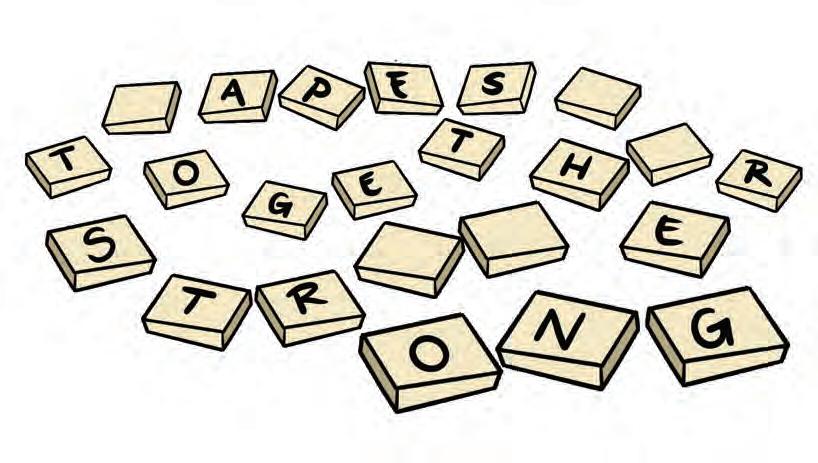

Meanwhile the apes of Reddit that instigated GameStop’s price spike continue to stand together strong with fellow apes — literally.
They began adopting gorillas like Ishimwe, an infant mountain gorilla in Rwanda, and Segasira, a silverback in the Democratic Republic of Congo. They are protected by the Dian Fossey Gorilla Fund, the world’s longest-running and largest organization dedicated solely to gorilla conservation. Through their symbolic adoptions, they have donated more than $350,000 according to the BBC.
And whether villainous, heroic, or just plain stupid, retail investors on social media have changed the game. Nobody knows what the next GameStop will be, but one thing is for sure: There is a new player on Wall Street to watch out for — We the People.
“You can’t deny the likeability of screwing a hedge fund.”
— Instructor Mario Yrun
ARE YOU GAME?

City College gets back on the field
 Story and photography by Melvin Wong
Story and photography by Melvin Wong
Sports fans: Get ready. The athletics program at City College of San Francisco officially resumed after a year of pandemic shutdowns this spring. Under strict COVID-19 regulations, three out of the four men’s teams, and six out of the seven women’s teams have begun practice. While some City College teams have chosen not to compete this year, the water polo, soccer and tennis teams have agreed to scrimmage with other schools’ teams.
The National Collegiate Athletic Association, NCAA, has determined that all of the 2020 and 2021 sport seasons will not be counted toward any student athlete’s eligibility. Eligibility is the NCAA ruling that gives each student athlete five calendar years to play in at least four eligibility seasons. This timeline begins at their initial enrollment at any college.
In spite of having been benched for an entire year due to the pandemic, a few City College rising stars have caught their coaches’ eyes. They are excited and prepared to get back on the field. Their coaches anticipate they will thrive in their sports careers.
They want to make the most of their college careers, but the chances of a student athlete extending their game past the college level are slim. For example, the probability of playing professionally ranges from 9.9% of college baseball players to just 0.8% in women’s basketball according to the NCAA website.
Successful college athletes, whether they become professionals or not, often have certain qualities in common. They tolerate criticism, foster a strong work ethic, and genuinely love what they do. Take note of each of the players below as their athletic prowess potentially takes them to play at four-year colleges and possibly into the professional sports industry.
Spring 2021 17
City College soccer players, from right to left, Aida Pedemonte, Gabriela Rodil, and Maleah Evans push a goalpost into position for their scrimmage game.
BASKETBALL
MIKAYLA AMOROSO
Mikayla Amoroso gets out of her friend’s black BMW and heads to the outdoor basketball courts behind St. Stephen’s Catholic School to coach. There has been an increased demand for enrollment in the Bay City basketball program because of the public school shutdowns, so they split the girl’s camp into two cohort teams. Amoroso coaches the 2nd to 4th grade “select” team and the other coaches oversee the “practice” team.
Many of the girls arrived early and are already shooting baskets when Amoroso walks in. She drops her backpack down, calls her team to line up on the court’s baseline and begins a running drill. She first explains then executes an example of what she wants the team to do. As each girl performs the drill, she critiques their form, offering instructions on the nuances of their arm and leg movements.
The girls are full of energy. They constantly ask Amoroso questions and try their best to perform each drill. Amoroso calls a quick thirty-second water break before they start back up again. She assigns pushups or running laps for repeated errors. The hour and fifteen minutes fly by due to the high tempo, non-stop pace of the practice session. She enjoys coaching because it allows her “to see the game in a different way” and challenges her to understand the “frustration of trying to get through to a player and find the right words.”
Basketball is still a male-dominated sport, but Amoroso hopes to change that narrative. Girls tend to drop the sport when they reach around ten- or twelveyears old, and most do not continue playing into high school. Amoroso believes negative attitudes on social media about women basketball players have influenced these impressionable minds. She hopes that by being a good role model, she can show them otherwise.
Amoroso is a City College sophomore who missed the opportunity to play in her freshman 2019-2020 season because of the
pandemic shutdown. She is excited for her first game as a Ram in this condensed and unofficial 2021 spring season. The season consists of scheduled scrimmages with official referees against other Bay Area community colleges.
Amoroso was born and raised in San Francisco. Her Italian father stressed the importance of getting good grades in school, while her Chinese mother has always been an advocate for women in sports. She would drive Amoroso to all of her basketball practices and games.
Amoroso has played basketball since kindergarten at the Saint Vincent De Paul School. She has played in the Asian League, in club basketball at Bay City, and throughout high school.
Tim Kees, Amoroso’s longtime Bay City coach, started working with her five years ago. He currently coaches the girl’s varsity basketball team at Gateway High School in San Francisco. Coach Kees says Amoroso’s biggest strength is her “basketball I.Q. and decision making. “She’s been playing for a long time, so she’s seen enough of the game to pick up the patterns quickly,”
Amoroso finds basketball to be a useful distraction when life off the court gets difficult. When she was in middle school, her older sister Amanda was diagnosed with a rare form of kidney cancer, and under the stress, Amoroso’s parents separated. During this period twelve-year old Amoroso learned how basketball could
serve as a stress relief through hard times. Amanda eventually made a full recovery.

Basketball was always there for Amoroso until she suffered a potentially careerending injury, a torn left lateral meniscus with resulting cartilage lesions. This type of injury completely immobilizes the knee, and the recovery process sidelined her for six months.
The injury tested her love for the game. “Do I want to put myself through all this pain to go back to it?” she wondered. But she missed the camaraderie between her teammates and the happiness she felt at practice. “This is what I’m meant to do,” she says.

18 Etc Magazine
Mikayla Amoroso drives toward the basket at the Gateway High School’s outdoor courts.
Amoroso’s injury serendipitously coincided with the pandemic shutdown, so she was able to undergo rigorous physical therapy to relearn how to move her knee again just in time to be at nearly full strength by the start of the 2021 season. But her road to recovery was difficult. She had to look inward to encourage herself “to get better and be better.”
Amoroso finishes coaching the girls and walks to her mom’s car, which is waiting to take Amoroso to her own basketball practice. Due to the safety guidelines at City College, unauthorized entry into campus is restricted, so Amoroso reaches out to Coach Kees for additional practice.

Coach Kees opens the gate entrance as the gusting winds howl throughout the empty outdoor basketball courts at Gateway High School. Amoroso is joined by her younger cousin, Kiera Wong. They walk in together, drop off their bags and begin shooting the ball around. It is cold outside and the steam from their breath fills the air as the last rays of sunlight disappear behind the school building.
Coach Kees reviews the fundamentals. He goes over shooting technique, feet placement, and ball handling. The explanation for each following drill is thorough. As Amoroso and Wong go through the exercises,
every misstep is critiqued and corrected.
The final layup drill tests Amoroso’s speed as Coach Kees defends her. She grips the ball next to her right hip. She then explodes to the basket, takes two dribbles, and hesitates her third. The forward momentum jerks Coach Kees away from Amoroso, and this creates just enough space for her to correctly set her feet, jump, and make the shot.
“This kid is extremely skilled,” says Coach Kees. “She’s really good at basketball and off the court, a great person all the way around.”
Spring 2021 19
Amoroso and her cousin Keira Wong shoot baskets before a late afternoon practice with Coach Tim Kees at Gateway High School.
BRETT TAKUCHI BASEBALL
Brett Takuchi grabs his bat and helmet, hops into an Uber and heads for an indoor batting cage. With the City College 2021 unofficial baseball season off to a late start, he plans to hit a few balls and work on his swing. Baseball is largely a muscle-memory sport, and his arms are rusty.

The unassuming office building exterior of Future Pro Baseball Center in Burlingame, Calif. gives way to the threelaned indoor batting cage and a large Astroturf practice field. Takuchi greets the owner Ray Evangelista with a fist bump and settles in for his first of six rounds with the machine. Each round throws twenty pitches.
High intensity music plays in the background and the fluorescent lights illuminate Takuchi’s batting lane. The pitching machine behind the black curtain clunks and groans before spitting out the first pitch.
Takuchi bunts the first round to warm up. He does not consider himself a “power hitter” who can simply knock every ball out of the park, so he works on his precision instead. He visually sections off three hitting zones, left, middle and center, and then focuses hitting a different zone each round. Later he tries to hit the back wall at certain heights.
He finishes his session and returns the bat and helmet, which were borrowed from the shop. He begins to pull out his wallet to pay for his eight-round session, two more than he initially set out for, but Evangelista interrupts him with a request. Antonio, Evangelista’s son, was recently cut from his junior varsity high school baseball team, so Evangelista asks Takuchi to share his perspective. Takuchi listens to Antonio whose coaches deemed him “not strong enough.” Takuchi has heard a similar story before—his own.
Antonio believes he has been overlooked by the coaches based on his modest size. He thinks they may have a bias against Asian-American players. Antonio is of Filipino and Japanese descent. Takuchi and Antonio’s father listen and nod in agreement.
Takuchi has experienced the same kind of treatment. “I’m not saying all coaches look down on Asian players, but a lot do,” he says. He considers baseball to be an American pastime and believes that the teams should be diverse so fans can relate to the players.
Takuchi is a fourth-year San Francisco State University, SFSU, student that got passed up by the SFSU team in his freshman year and again in his sophomore year before finally joining the baseball team at City College. Mario Menendez, City College’s head baseball coach, scouted Takuchi at an SFSU practice and convinced him to join the team at City College. Takuchi joined the team during the spring 2019 season, but did not have the chance to play because of the pandemic.
He grew up around Torrance, California in a sports-oriented family. He has a twin brother, Kyle, and a younger brother, Todd. His father, Craig Takuchi, was his first baseball coach and mentor. He believed Takuchi had potential but wasn’t realizing it yet, so he was very hard on him.
Takuchi’s best childhood friend, Taishi Nakawake, plays Division I baseball at the University of California, Irvine. Takuchi
admires Nakawake. “A little bit of my work ethic comes from him. … just seeing how hard he works, and me striving to be where he’s at,” Takuchi says.
Takuchi stands at 5 foot 6 inches which is considered short for a baseball player, but he makes up for his size by outworking his peers. “The hard work after practice, getting enough food, getting enough sleep, doing your work to stay eligible … I’m a firm believer that if you do all that … the results will come,” he says.
At the batting cage, Evangelista rewraps a new grip on a returned bat and hands it to Takuchi as a thank you for speaking with his son. Evangelista has nothing but praise for Takuchi. “He’s a great kid, a hard worker, very focused, and a leader.” He asks Takuchi if he would be interested in working as a baseball trainer for Antonio. Evangelista hopes Takuchi’s work ethic and leadership skills can rub off on his own son.
Takuchi finishes up his routine at home as he rolls out his yoga mat and takes out his workout bands. Even after a long day of batting practice, the hard work does not end and neither does Takuchi’s tenacity for his sport.
20 Etc Magazine
Brett Takuchi reacts to a missed pitch while practicing at Future Pro Baseball Center in Burlingame, Calif.
DINO KAHAULELIO FOOTBALL
Dino Kahaulelio walks toward the chain link fence that surrounds the Elsie Allen High School’s football field near his home in Santa Rosa. A few of his City College Rams football teammates are with him. “People fix and tear down this fence all the time,” he says as they hopped over a broken section.

Kahaulelio was the team captain for the football team during the fall 2019 football season, before the pandemic shuttered the 2020 fall season.
Kahaulelio is large and muscular with long curly hair sticking out from under a fitted ball cap. He is of Hawaiian descent and proud of his heritage. On his left arm he has a traditional Hawaiian tattoo of his family name and tribe.
He is a journalism major and wants to use his degree to write about his Hawaiian roots. “Not many people know the truth about our culture,” he says. “So being a journalist, that gives me the chance to help teach others what it is.”
On the field, while his teammates warm up, Kahaulelio sets out small cones. Some of his teammates mumble about the drill he wants them to do, but Kahaulelio, a natural born leader, is persuasive. He insists it is a good training exercise.

He hopes to continue his football career after City College. He says he will go
anywhere that offers him a scholarship, “so I don’t have to put any burden on my family with cost and tuition.”
After practice he and his teammates go back to his place to hang out. He lives on a large piece of farmland with several structures behind the main house, including a family-built batting cage and an old barn-like building which works as his gym and bachelor pad.
The walls of the gym are decorated with Hawaiian memorabilia, signs, plaques, and a gigantic banner displaying his high school football team. There is a squat bar
that he and his uncle built together, a TV area, and a kitchen. It is perfect for relaxing with his friends and working out.
He heads over to the batting cage to find his friends goofing around, hitting half-heartedly and casually throwing balls at each other. “Bro, let me show you how it’s done,” Kahaulelio says and grabs a bat.
After a while, Kahaulelio and his teammates head back to his gym. There is a short struggle over the best couch spots as the football players settle in and watch an episode of “The Office.”
Spring 2021 21
Teammates Dino Kahaulelio, left, and Isaias Sierra, right, jump the fence that surrounds the Elsie Allen High School’s football field near his home in Santa Rosa, Calif. They like to use the field for practice.
Kahaulelio warms up with the City College football team on the field at Ocean Campus in March shortly after the Rams resumed on-campus practice.
SOCCER
AIDA DYDASCO PEDEMONTE
Aida-Rose Kapua Auli’i Dydasco Pedemonte walks onto the Crocker Amazon soccer fields with her cleats strung over her shoulder and a large Hydro Flask water bottle sticking out of her gym bag. The entire City College campus is closed for spring break, so Dydasco Pedemonte and her fellow captains are hosting a team practice to prepare for an upcoming scrimmage against the West Valley Vikings in Saratoga, California.
Dydasco Pedemonte greets her teammates with a smile behind her mask and a friendly wave. The players chat while they change shoes and tie up their hair. Fist bumps and laughter fill the air. They begin stretching and focus especially on warming up their legs.

A few players jog over to the far side of the field to push the moveable goalpost into position. Dydasco Pedemonte places orange cone markers for their first passing drill.
She hands out neon green practice jerseys to her teammates. “We better win!” she says jokingly to her teammates. Her competitive spirit peeks through even in jest.
A City College sophomore, Dydasco Pedemonte is playing in her second year on the women’s soccer team. So far though, she has played just one season—fall 2019. The 2020 season shut down due to COVID-19. In this 2021 unofficial season, they play weekly scrimmages with a small selection of other Bay Area colleges.
Soccer is and has been a constant in Dydasco Pedemonte’s life since she started playing in elementary school. Her parents both played soccer at San Francisco State University. Her older sister Olajua played soccer at Point Park University in Pittsburg, Pennsylvania, and her younger brother Eduardo currently plays on the South San Francisco High School soccer team.
She says soccer gives her life structure, and she feels challenged every time she is on the field. “It mentally and emotionally pushes me past a point where

I think I can’t do it or I’m really tired,” she says. She pushes through that point of exhaustion because she always wants to do better. “If not for myself, then for my team.”
She finds a way to balance the rigor of soccer and a part-time job as a waitress while she works toward a degree in psychology. Extremely goal-oriented, Dydasco Pedemonte plans on moving to Boston next year to attend Fisher University on a full soccer scholarship.
She plans to attend graduate school too, but her ultimate goal is “to be happy in life.” She believes focusing on things out of one’s control leads to unnecessary stress. “Being comfortable with the fact that you
can’t control everything in your own life is really important,” she says.
Although soccer is a respected and beloved sport globally, Dydasco Pedemonte asserts that there is a general “lack of recognition” for women’s soccer worldwide, particularly in the United States. “Our women’s team has performed (inter)nationally better than the men’s team. … (The U.S. women’s national team) is underpaid, and they just get a lot less national recognition for their accomplishments,” she says.
She makes a good point. The U.S. women’s national team currently holds the 2019 World Cup title and has won four in
22 Etc Magazine
Aida Pedemonte chats and laughs with her teammates before they run drills and hold a scrimmage at the Crocker Amazon soccer fields during spring break this past semester.
Pedemonte, right, talks to teammate Gabriela Rodil, left, after their scrimmage game.
total. The U.S. men’s national team has only placed once at the 1930 inaugural World Cup with a bronze medal victory. However, the 2019 U.S. women’s team earned $30 million in prize money compared to $400 million earned by the French men’s team at the 2018 men’s World Cup, according to The Wall Street Journal.
Back on the soccer field, Dydasco Pedemonte hounds each attacking forward that tries to advance. As an outside fullback, she guards the rear and shouts encouragement to her team’s forwards and strikers.

The melange of voices communicating passes and warnings persists as the game turns into a fierce dance. The teams trade victories, each getting one win. On the following Thursday, Dydasco Pedemonte and her team dominated the field and defeated the Vikings, the team they had practiced and scrimmaged for, ending the game three-nil.
 Above: Pedemonte fixes her hair while a teammate chats in her ear after practice. Below: Pedemonte, left, dribbles the ball while being guarded by Maleah Evans, right, who was working defense.
Above: Pedemonte fixes her hair while a teammate chats in her ear after practice. Below: Pedemonte, left, dribbles the ball while being guarded by Maleah Evans, right, who was working defense.
THROUGH HER EYES
Women of color diversify the workplace in front of and behind the camera

 Story and photography by Xiaofan Fang
Story and photography by Xiaofan Fang
Latina photographer María del Río joined a pre-production meeting about an upcoming shoot. The client shared their lineup of eight models. “They were all blonde and blue-eyed without exception,” the former City College of San Francisco student and Oakland-based photographer recalled.
“I notice that all of the talent you suggested are white women, and I’m wondering if there is room to incorporate diversity,” del Río pointed out. The client seemed flustered and explained that it was not intentional. After some discussion they swapped in two models of color.
White faces had dominated for decades. According to a 2015 article in The Atlantic magazine titled “The Least Diverse Jobs in America,” the arts and entertainment
industry was the third least diverse industry in the United States.
Early in her career, del Río would tell her agent, Katie Patterson, about the unsettling lack of diversity. Patterson was nervous that if del Río spoke up, she would lose clients. When she was offered jobs with non-diverse casting, Patterson would tell del Río to prepare to “have the talk.”
Things have changed since then. Diversity in photography is now a hot topic and racial inclusivity on the runway has trended upward too. According to the fashion industry website The Fashion Spot, only 18% of runway models were people of color in the spring 2015 season globally. By the fall 2020 season, 41% were models of color. Achenrin Madit, a woman of color
24 Etc Magazine
María del Río, left, chats with her digital technician Victoria Manildi O’Brien, right, at her photo shoot for Haleys Beauty, a Bay Area based makeup company.
Del Río photographs a model during her photo shoot for Haleys Beauty.
of South Sudanese descent, appeared in 38 shows and racked up more runway miles than any other model had that season.
“So much has changed,” del Río says. “Nowadays, clients come to me with all women models of color. There is no need for that awkward conversation... This change is so exciting and beautiful to see.”
On a recent ad campaign shoot, del Río was chatting with the art director, the prop stylist and the client — all of whom were white women. The art director commented, “It’s so beautiful that the ad campaigns are so diverse now. We’ve come so far with diversity!”

Del Río agreed. The client had indeed cast a wide range of models, diverse in age, race, and gender. However, out of the 12-person crew behind the camera, only two were people of color. “When you are a part of the minority, you notice this imbalance immediately,” del Río reflects.
According to the 2019 U.S. Census, 53% of professional photographers were male and 73% were white. Jung Fitzpatrick, a Korean-American photographer and former City College student, knows this from experience. Recently, while on set as a COVID-19 compliance officer, she noticed that the entire crew was white, except an assistant and herself. She was not surprised. “For most sets I’m on, I assume that it’s going to be mostly white people.”

In the film industry, “it’s even worse,” del Río says. 60% of professional directors were male and 76% were white according to the 2019 U.S. Census.
“In any category of directing, very few women had a chance,” says music video and advertising director Vanessa Beletic. As recently as four years ago, her female colleagues were rejected by production companies with blatant excuses like “We already had a woman on our roster” or “We don’t get the kind of work you are right for.”
“If a female director was fortunate enough to be signed,“ Beletic says, “she would get commercials for tampons, birth control, and maybe, makeup.” After directing officially for seven years and unofficially for 15, she was offered a sports
Spring 2021 25
Photographer María del Río sits for a portrait while on set of her shoot for Haleys Beauty.
Del Río, left, discusses concepts with the hair stylist’s assistant Amber Jahn, center, and the art director Danielle Moore, right, at the photo shoot for Haleys Beauty.
drink commercial for the first time last year, an opportunity that she says is traditionally given to men.
Women make, on average, 79 cents for every dollar men earn. However, women of color face an even wider pay gap. Black
women earn 65 cents on the dollar, while Latinas earn a dismal 54 cents, according to a 2016 article in The Atlantic magazine.
“The threshold for diversity can still be about cisgender white women, rather than women of color, black women, and indigenous women. That doesn’t even include gender-expansive folks,” says Tanea Lunsford Lynx, women’s and gender studies instructor at City College.
There are few women of color in managerial positions within all fields and even fewer in executive roles. White men make up 35% of the entry-level roles and 44% of managerial positions according to the 2020 McKinsey Institute report on women in the workplace. While the percentage of white men in higher positions increases, the career trajectory for women of color is not promising. They only make up 18% of entry-level roles and 12% of managerial positions.
“When I look at production companies’ websites and rosters, all of the founders and executive producers are white and mostly white men,” Beletic says. She thinks they only hire people of color when they fear they might get audited.
“It’s frustrating that they think they have done their diversity duty,” Lynx says.
Having people of color in executive and hiring positions is crucial. “Whoever’s in power is going to open a door and give an opportunity to others. It’s my chance to give a chance to women and people of color and hire them as my key collaborators,” Beletic says.
Without women of color in higher positions, there are also fewer role models. While taking a photography course at
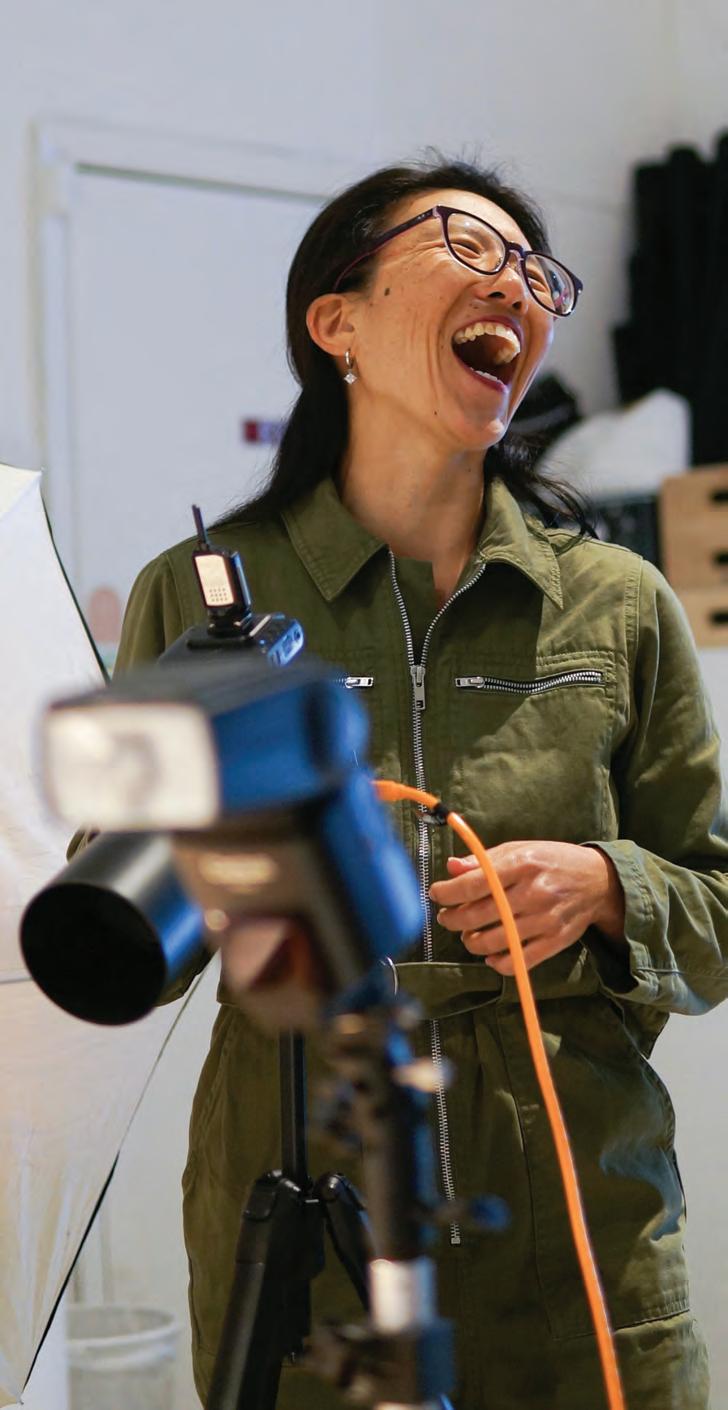
26 Etc Magazine
Jung Fitzpatrick does a test shoot in her SOMA studio.
“For most sets I’m on, I assume that it’s going to be mostly white people.”
— Jung Fitzpatrick
her local community college in Santa Fe during high school, del Río was discouraged because “there wasn’t a single person of color in that class.” She distinctly remembers thinking, “This art form is not for me.”
Del Río did not pursue photography again until she was studying Latin American and Latino Studies a few years later. “I was able to learn more about and take pride in my identity.” She signed up for another photography class. “It became exciting and attainable again.”
Del Río faced an economic barrier when she first started out. “I had to be able to afford a camera, lenses, film, processing fees, and access to the dark room. My mom saved up to buy a used camera for me and it didn’t work,” she says. “The reality is that you’re buying subpar equipment. You’re starting with a roadblock already.”
Resources are now beginning to surface to help women and people of color break into the photography industry. “One that I really love is Authority Collective,” del Río says. Authority Collective, founded in 2017, “works to empower marginalized artists with resources and community, and to take action against

systemic and individual abuses” according to their website.
“Out of all the organizations that I’m part of or used for hiring, they are doing it right,” del Río says. “They are really working to get their members hired and into hiring positions.” Through Authority Collective’s well-connected network, del Río has received both scholarships and actual jobs.
Recently, del Río was hired to photograph an intimate campaign about female empowerment. One of the models, a breast cancer survivor, would be photographed topless. Del Río felt it was important to hire an all-women and racially diverse crew. Given the status quo of the industry, sourcing a diverse crew was far from an easy task. After many months of searching, she helped to hire 40 women, including the director of photography and all of the technicians. 65% of the crew and talent were women of color.
“The more perspectives there are, the more truth there is in the images and the storytelling” del Río says. “Someone (at a) disadvantage brings a certain level of awareness that a privileged person may not have.”
Spring 2021 27
Fitzpatrick styles a sushi burrito during a lighting test for an upcoming food shoot in her SOMA studio.
“Someone in disadvantage brings a certain level of awareness that a privileged person may not have.”
— María del Río
Beletic and Jung pay it forward through mentoring and helping women and people of color. Jung promotes her first workshop “The ABCs of photo assisting” in groups for women and diverse photographers. “Being my own boss, I get to create this world and culture for my business, which is really exciting,” she says.
Beletic mentors black women who want to become directors. “I want to support the folks that feel like they have the least chance. It has been really wonderful. … They all feel like they are leveling up,” Beletic says.

Del Río is busy shooting on set for a women-founded beauty brand. She clicks the shutter a few more times. “We got the shot, thank you,” she says to the red-haired model holding a light-shade foundation product up to her fair cheeks. She gestures to the next model to sit down. Fourteen models, each

with different skin tones, arrive on set throughout the day. Del Río steps away from the camera and joins the art director and digital technician to inspect the images on the monitor. Although the crew is mainly women, few of them are women of color.
After last summer’s protests in the wake of George Floyd’s murder, the conversation about diversity resurfaced in
the mainstream media. “Being a woman of color is a trend now,” Beletic says.
However, being trendy is by definition ephemeral. “We need to have patience,” she says. “A lot of people feel that there’s an over-correction. I 100% welcome the over-correction.” She believes that the best talent will rise to the top.
Instructor Tanea Lunsford Lynx journals and reads at Robert Pender Park near Lake Merced. Lynx teaches women’s and gender studies at City College.
28 Etc Magazine
Fitzpatrick adjusts lighting equipment during a test shoot in her SOMA studio.
“It’s frustrating that they think they have done their diversity duty.”
— Tanea Lunsford Lynx
Chefs adapt to survive changes in the service industry
 Story by Megan Ogle
Photography by Bo Lenschau Illustration by Bobby Ramirez
Story by Megan Ogle
Photography by Bo Lenschau Illustration by Bobby Ramirez
The clock strikes five as guests begin to arrive at Che Fico Alimentari. They check in with the host who stands outside prepared to discuss all of the COVID-19 rules while simultaneously taking to-go orders. Then the guests are seated at one of six tables in the wooden parklet strung with cafe lights on Divisadero Street. Suddenly the kitchen is in full swing.
Alimentari barely resembles its pre-pandemic self. Before COVID-19, Alimentari’s sister restaurant, Che Fico, was a popular restaurant with a long line of people waiting outside for a table. A year after Che Fico’s inception and just one year prior to the pandemic, owners Matt Brewer and David Nayfeld, opened their second restaurant, Che Fico Alimentari, downstairs. While Che Fico was a fine
dining experience with a Californiainspired Italian menu, Alimentari was a smaller, casual eatery by comparison.
Before the pandemic, both restaurants combined would serve close to 500 guests in a night. When the pandemic hit, the owners folded both places into one operation, furloughed 90% of their employees and began serving out of Alimentari only.
With COVID-19 guidelines and regulations constantly changing, restaurants like Alimentari have had to make operational decisions on the fly, with little or no notice.

Many establishments closed their doors permanently as the pandemic dragged on. An estimated 30% of San Francisco neighborhood restaurants shuttered with no plans to reopen according to an article

Spring 2021 29
In Che Fico Alimentari’s back kitchen, sous chef Alexis Hernandez, left, stretches house-made pizza dough while Jazmine Fenton, right, spreads sauce.
published in SFgate in January 2021. The list of closures is expansive and includes landmarks like the historic Cliff House and Louis’ and neighborhood staples like Ton Kiang and Muddy Waters Coffee House, where over the past ten years Etc Magazine staff have met to edit stories over coffee and pastries.
5.9 million restaurant industry workers in the U.S. lost their jobs due to the pandemic according to an article published in May 2020 on Eater.com. This percentage does not even include employees who were not on payroll, like many undocumented workers.
The few employees that continued working were considered to be at a very high risk of contracting and dying from COVID-19, according to a University of California, San Francisco study. The study found that kitchen staff, and more specifically, line cooks were at the highest risk.

In spite of this, a handful of cooks and chefs stayed on at Alimentari to help keep its doors open, food on the table and money in their pockets.
Jazmine Fenton, sous chef at Alimentari, never stopped working. “I have definitely had to take on a lot more responsibility...and be able to pivot and change at any moment.”
The switch from fine dining to take-out and to-go is not an easy conversion, impacting everything from menu-item options to workflow management.
When Alimentari first reopened with a pared down kitchen staff they tried to do the full menu as take-out only, but after a week, abandoned that plan.
 Alimentari sells their own Italian-inspired pantry products including sauces, pastas, cocktails and deserts to generate another stream of income.
Alimentari sells their own Italian-inspired pantry products including sauces, pastas, cocktails and deserts to generate another stream of income.
30 Etc Magazine
In the small kitchen of Birba wine bar, Intu-On Kornnawong creates what she calls “Thai drinking food” to serve at her pop-up restaurant. Birba wine bar hosts Kornnawong’s eponymous pop-up on Sundays. Her cuisine goes well with the variety of fine wines and spirits that Birba offers.
They began a meal donation program offering free meals to anyone in need. It was sponsored by large donations from wealthy patrons. They called this the Family Meal Menu. After about a month, paying customers could order off the Family Meal Menu too.

They were preparing up to 300 meals a day, each feeding two to three people. Alementari Sous Chef and City College alum, JD Herrera, was back in high-volume cooking. “You have to think about logistics a lot differently,” he says.
In August, the Bay Area was coming out of its second COVID-19 surge, and Alimentari switched back to a traditional to-go and take-out format again but with a pared down menu. They built their parklet.
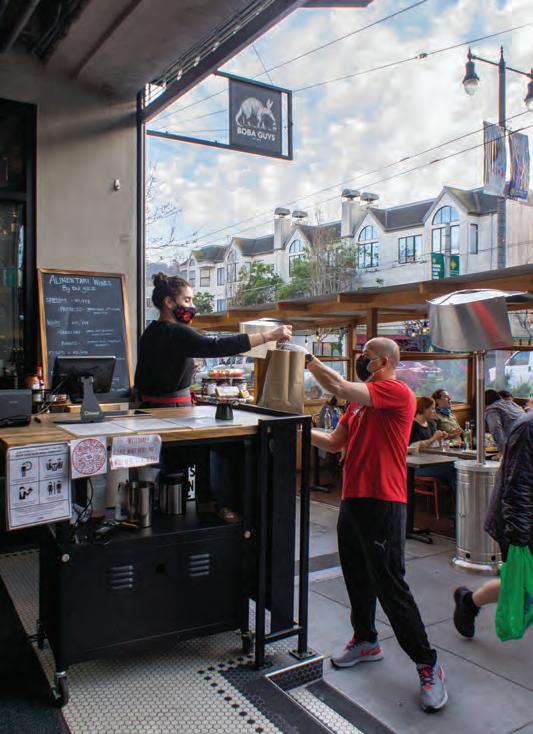
Nobody sits at the chef’s counter anymore to watch the three cooks prepare meals in the open kitchen. Employees use the space to jar and label pantry items for shipment and package to-go orders for delivery. As of April 2021, there are still no indoor diners.
Sous chef Fenton says there is a big difference between preparing in-person dining meals and to-go boxes. “The nature of to-go food is thinking about how these dishes are going to travel,” she says.
The chefs at Alimentari package the food in compostable boxes, each suitable for the dish that is being delivered. Each box is taped shut so nothing spills en route and to show that the food has not been tampered with.
For in-person dining, preparation is very much about presentation because the guest is right there. “The experience is sensory,” Fenton says.
“One of the things that really set us apart, in addition to our food being good, was the atmosphere that we created here,” Hererra says.
“I just don’t think people think about the cogs of the machine, or how many people it takes to make their experience possible,” Fenton says.
If things are not complicated enough, Alimentari now sells pantry products too. Sauces, pastas, cocktails, salamis and even desserts have all been canned, jarred, packaged and labeled by hand. They offer holiday meals and community-supported agriculture boxes that consist of a combination of produce from Bay Area farmers and Alimentari pantry items. This is all while operating with only 10% of their pre-pandemic staff.
Intu-On Kornnawong was laid off in March as sous chef at Kin Kao, a Thai restaurant in the Dogpatch neighborhood. Now she runs her own pop-up and does consulting.
At first the change was upsetting and stressful, but it allowed her the space to focus on her own projects. Before the pandemic, she was reluctant to start her own business, but she was pushed out of her comfort zone and forced to take a leap of faith. “Before I was thinking, ‘Ok, I don’t have money so I need to be at the restaurant, and I need more experience,’” she says.
Intu-On is her eponymous Thai pop-up that takes place at Birba wine bar and retail shop in Hayes Valley every Sunday. Like Alimentari, Birba has a parklet in front. There is also a heated back patio with tables spread safely apart.
Kornnawong creates North-Eastern “Thai drinking food” with California ingredients. She does not play it safe. The food is spicy and acidic and definitely much different than other Thai food found around the city.
“I like to be creating things all the time and COVID pushed me to get out and do something new,” Kornnawong says. She had done pop-ups around the city previously and decided to start again, this time designing her menu to go well with beer and wine. Birba was a perfect match. The wine bar was serving small bites before Intu’s pop-up, but her menu significantly increased their business.
A sign by the entrance to Birba wine bar reads “No Mask No Service.”
Spring 2021 31
Allison Schaffer, left, hands an order to customer Sitara Gurung, right. A newly built mobile counter by Alimetari’s entrance functions as a space for staff to safely interact with customers.
Erik Harrelson decided on a more extreme career change when he lost his job. He had been head chef at both Radhaus and at Biergarten, German style eateries in Fort Mason and Hayes Valley. He went on to work as a private chef for a wealthy Bay Area family.
When he first lost his job, it did not feel permanent. But as one month became two and so on, he eventually came to terms with the idea that he might not be going back to work for a while.
The pandemic provided Harrelson with the first long-term break of his 23-year career. “Having that much time off made
me reevaluate.” He wondered how much of his identity was wrapped up in his job.
While he liked the camaraderie and energy of a restaurant, he did not like the long hours and unspoken expectation of unpaid overtime.
He saw three options: Go back to the restaurant when it opens up again, look for a culinary director position which would provide a better work-life balance or go the private chef route. He decided to go with option three. Through a friend he was introduced to a San Francisco family who hired Harrelson to cook for them.
The family is based in San Francisco but decided to move to Hawaii for a few months late in the pandemic. They took Harrelson with them. He did all of the family’s cooking and all of the household shopping.
Cooking privately is a “very different beast,” he says. It required a change in his thought process: There is no set menu. He admits that there was a learning curve. He went from leading a group of forty-plus people to being a one-person team.


Working as a private chef provided Harrelson with a steady income, a stint in Hawaii, and more freedom in his schedule, but there was limited upward mobility. “In a restaurant, the harder you work the more money you make,” he says. However, Harrelson does not see himself going back to work in another chef’s kitchen anytime soon. “Killing myself to put money in someone else’s pocket sounds awful,” he says.
Harrelson, recently let go of his private chef job, is back in the Bay Area looking for what’s next. He started a meal-kit delivery company while in Hawaii and plans to split his time between both places. While he is unsure what the future holds, he is focused on his company in hopes that it takes off. No matter what happens, “I still love to cook,” Harrelson says.
Kornnawong plans to continue with her Sunday pop-up at Birba and hopes to one day own her own restaurant.
By the time this article is published, Alimentari anticipates that they will be serving about 100 diners on-site per night. Fenton is prepared. “We have learned so much about our capabilities that we have the ability in the future to make an even better restaurant than we already have.”
32 Etc Magazine
Allison Schaffer, left, takes a to-go order from two customers at Alimentari.
Alimentari’s kitchen spans nearly the entire width of the restaurant, allowing staff members to work side-by-side. The open-concept enables restaurant guests to watch the action while sitting inside, but Alimentari was closed to indoor dining for quite some time.
OPEN DOORS, OPEN MINDS
City College and San Francisco Public Libraries make their services available during the pandemic
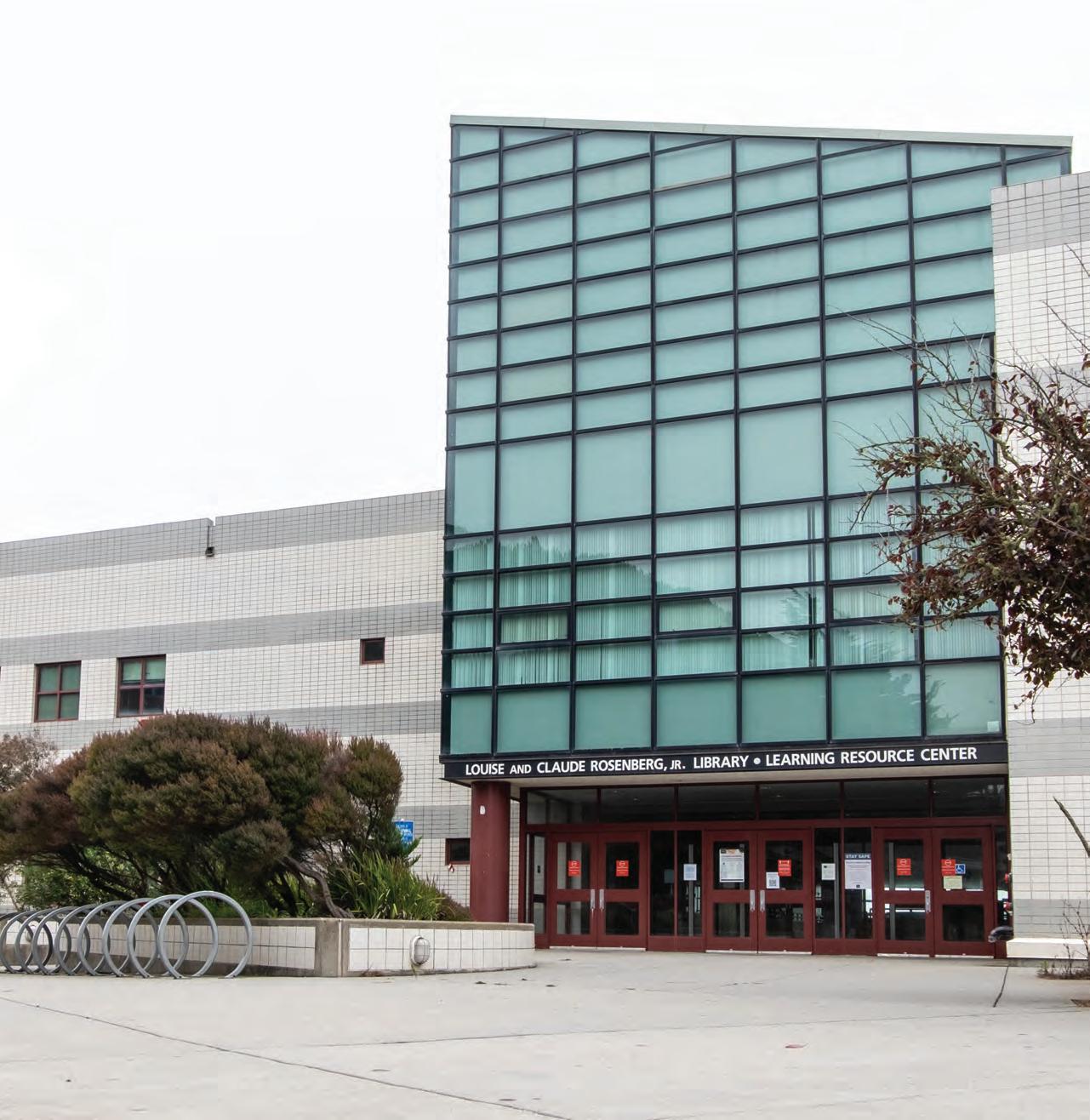 Story by Connie Chu
Story by Connie Chu
Spring 2021 33
City College’s Louise and Claude Rosenberg Jr. Library shut down in March 2020 and remains closed at least through early May 2021 due to COVID-19.
Photography by Kevin Kelleher
On a cold San Francisco day, Librarian Brian Darr steps outside from the Rosenberg Library on the City College Ocean campus. He walks past an A-frame sign informing students picking up books to call the circulation desk.
He holds a paperback in his hand, a book reserved through the library’s contactless curbside pickup program. Receptive and friendly, Darr hands it to a student and informs her of its due date.
The pandemic shuttered the City College libraries in March 2020. “City College Library closed all library locations to students and the public,” says Anthony Costa, Chair of the Library and Learning Resources Department.

Around October, City College created the curbside pickup program to accommodate students with their library needs. Since then, the library has been providing the contact-free services at Rosenberg Library only.
The changes adversely impacted City College library staff. “Almost all of our part-time librarians have been offered fewer hours starting fall 2020. About seven part-time librarians who wanted assignments in fall 2020 did not get them,” Costa says. Full-time librarians have also been hit. “We currently have 17 fulltime faculty librarians. Six of them have received pink slips,” he says. This arrangement will most likely continue through the 2021 summer session.
Before the pandemic, Darr worked at the City College’s Downtown Center Library, where the sounds of bustling students hurrying to classes has been replaced by an eerie silence. He now works at City College’s contact-free curbside pickup program.
Through OneSearch, the City College library database, students can request books. After requesting books, they receive an email that their order is ready at Rosenberg Library, and they reserve a timeslot for pickup. When they arrive at the library, they call the circulation desk, and a librarian walks out to them, checks their student ID, and hands them the requested books. The service is free to registered City College students. Students can return books at a dropoff box located at the Rosenberg Library entrance.

34 Etc Magazine
Brian Darr is a library technical assistant at City College. He used to work at the Downtown Center library before the pandemic but now hands off reserved books as part of the curbside pickup program.
Reserved books line the desks of the Park Branch of the San Francisco Public Library, ready for members to pick up at assigned times as part of the SFPL To Go program. All branches of the SFPL were closed in March 2020 due to the pandemic and are slowly reopening.
Students are allowed to keep their checked out items until the end of the term.
If students request materials located in other campus libraries, all of which remain closed at the time of this article, a faculty member retrieves and delivers them to Rosenberg for pickup.
Similar to the City College curbside pickup program, the San Francisco Public Library, SFPL, has a service called SFPL To Go. However, patrons are only allowed to borrow books for three weeks according to Park Branch Librarian Leila Sarkisian.

When both contact-free pickup programs began last October, SFPL To Go was only available at the Main Branch Library in the Civic Center. It has since expanded and is now available at over 20 branch locations throughout San Francisco.
Anyone with a valid SFPL card can order books online through their website. They can also order DVDs, download e-books, listen to music, and stream movies. Whereas at City College, students can obtain digital media only through the media resource center.
Both library systems are operating with reduced staff. According to Donna Reed, City College Dean of Library and Learning Resources, “While the College is in remote mode, all librarians are working remotely.”
At the SFPL, the entire library staff was kept on payroll, but 41% of the library’s workforce were redeployed as Disaster Service Workers to support the City’s emergency response efforts. This is according to Michelle Jeffers, SFPL Chief of Community Programs and Partnerships.
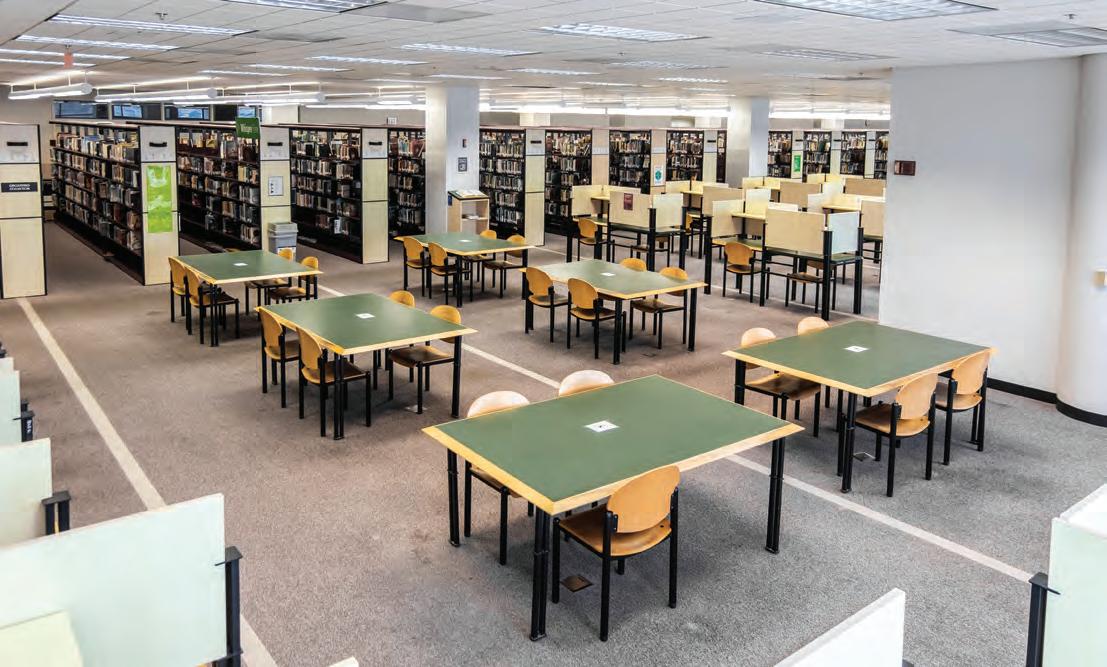 Lisa Booker deposits books in the book drop at the Rosenberg Library. She had borrowed them through the library’s curbside checkout program.
Lisa Booker deposits books in the book drop at the Rosenberg Library. She had borrowed them through the library’s curbside checkout program.
Spring 2021 35
The Louise and Claude Rosenberg Jr. Library at City College’s Ocean Campus remains empty throughout the spring 2021 semester.
When the pandemic hit, the SFPL adapted by creating the 24/7 Virtual Library, offering digital resources like e-books, e-audiobooks, movie streaming, research databases and digital magazines and newspapers. They began issuing electronic library cards for new patrons.

According to the 2019-2020 SFPL Annual Report, they have experienced a surge in virtual traffic. Overall usage of their digital resources were up by 63% in 2020. In particular, usage of their film streaming service, Kanopy, increased 105%.
One City One Book, the citywide literary event that encourages members of the San Francisco community to read the same book at the same time, transitioned online too. Traditionally, the SFPL would host the selected book’s author to speak to a live audience. “About 250 people would fill the Koret Auditorium at the Main Branch Library and occasionally another
100 might show up and fill an overflow room,” Jeffers says. Due to the pandemic, in 2020 the SFPL hosted a virtual event. “More than 2,000 people from around the world participated in the featured talk with author Chanel Miller,” she says.
City College librarians also adapted and expanded online services. Through the City College Library Virtual Campus site,
services. Other neighborhood branches will follow suit and resume in-person services too, according to an April 2021 memo by San Francisco City Librarian Michael Lambert.
librarians are available 24/7 for students who seek help with research. They provide support to students in Cantonese, Mandarin, Spanish, and Vietnamese via phone.
When San Francisco dropped into the Orange Tier in March 2021, Governor Newsom announced the plan to fully reopen California on June 15. The SFPL Main Branch Library is slated to be the initial pilot site for resuming in-person
For City College however, “There are no immediate plans for students to return to the library spaces in the fall,” according to Reed. Instead, the City College libraries plan on expanding contact-free service hours at the Rosenberg Library and plan to have limited contact-free services at the Mission, Chinatown/NorthBeach and John Adams Center Libraries.
As the city slowly reopens, the SFPL and City College Libraries are gradually re-emerging. The SFPL officially announced that the Main Branch reopened on Monday, May 3. With their virtual adaptations, they will build back better.
36 Etc Magazine
Librarian Leila Sarkisian hands Katie Gibson her reserved books at the Park Branch of the San Francisco Public Library. Sarkisian’s dog Ogden is at left.
“More than 2,000 people from around the world participated in the featured talk with author Chanel Miller.” — Michelle Jeffers
JOURNALISM CLASSES
To register for courses go to www.ccsfjournalism.com
For more information call (415) 239–3446 or email etcmagazine@mail.ccsf.edu
Jour 21: News Writing and Reporting
70903 001 Lec. T R 11:10 – 12:25 p.m.
3.0 units
Gonzales
Techniques of newspaper reporting, developing and writing a news story, training in information gathering and interviewing sources.
PREREQ: ENGL 93 or ENGL 95 or ENGL 88 or ENGL 88A or placement in ENGL 96 or ENGL 88B
Jour 22: Feature Writing
70904 551 Lec. T 6:10 – 9:00 p.m.
3.0 units
Mullaney
Fundamentals in feature writing for magazines and newspapers with special emphasis on profile and interpretive news features. Practical experience in interview and in-depth research techniques. Training in how to write a freelance story for publication.
PREREQ: ENGL 93 or ENGL 95 or ENGL 88 or ENGL 88A or placement in ENGL 96 or ENGL 88B
Jour 24: Newspaper Laboratory
70905 001 L/L M W F 12:10 – 1:00 p.m.
3.0 units
Gonzales
Beginning newspaper laboratory course focused on the publication of the college newspaper The Guardsman. Provides a practical understanding of the various elements involved in producing a newspaper. ADVISE: JOUR 21. CSU
Jour 26: Fundamentals of Public Relations
70906 001 Lec. T R 09:40 – 10:55 a.m.
3.0 units
Gonzales
This course prepares students to create an effective public relations campaign that includes writing media releases, “pitch” letters, public service announcements, managing media outlets, coordinating mailings, and designing leaflets and posters, as well as setting up a news conference. CSU
Jour 29A: Intro Magazine Editing & Production
70910 551 L/L M 6:30 – 9:30 p.m.
3.0 units
Lifland
An introduction to the process of creating a magazine publication. Students work as part of a staff of writers and photographers, focusing on writing and photographing feature stories suitable for publication in the campus magazine.
ADVISE: JOUR 21 or JOUR 22 or JOUR 37
Jour 29B: Intermediate Magazine Editing & Production
70911 551 L/L M 6:00 – 9:30 p.m.
3.0 units
Lifland
An intermediate exploration into the process of creating a magazine publication. Students work as editors focusing on editing content suitable for publication in the campus magazine. They participate in the editorial and production process and develop the skills required for publishing a campus magazine.
ADVISE: JOUR 29A
Jour 29C: Advanced Magazine Editing & Production
70909 551 L/L M 6:00 – 9:30 p.m.
3.0 units
Lifland
An advanced exploration into the process of creating a magazine publication. Students work in management positions focusing on leading a staff in producing content suitable for publication in the campus magazine. They facilitate the editorial and production process and develope the skills required to manage the publication of a campus magazine. ADVISE: JOUR 29B
Jour 31: Internship Experience
70907 W01 Wrk Exp HOURS ARR
Supervised on-campus or off-campus employment in a branch of journalism or a closely allied field.
ADVISE: JOUR 24, Repeat: Maximum credit: 4 units
Jour 37: Intro to Photojournalism
70908 551 Lec. W 6:10 - 9:00 p.m.
2.0 units
Gonzales
3.0 units
Lifland
Emphasizes concepts of photojournalism such as news and feature photography. Assignments will involve photographing people and visual storytelling at a level appropriate for publication such as in campus publications. Access to Single Lens Reflex (SLR) digital or film camera required.
ADVISE: PHOT 51 or demonstration of equivalent knowledge. CSU
Spring 2021 37 FALL 2021
FREE YOUR CREATIVITY
Journalism 29
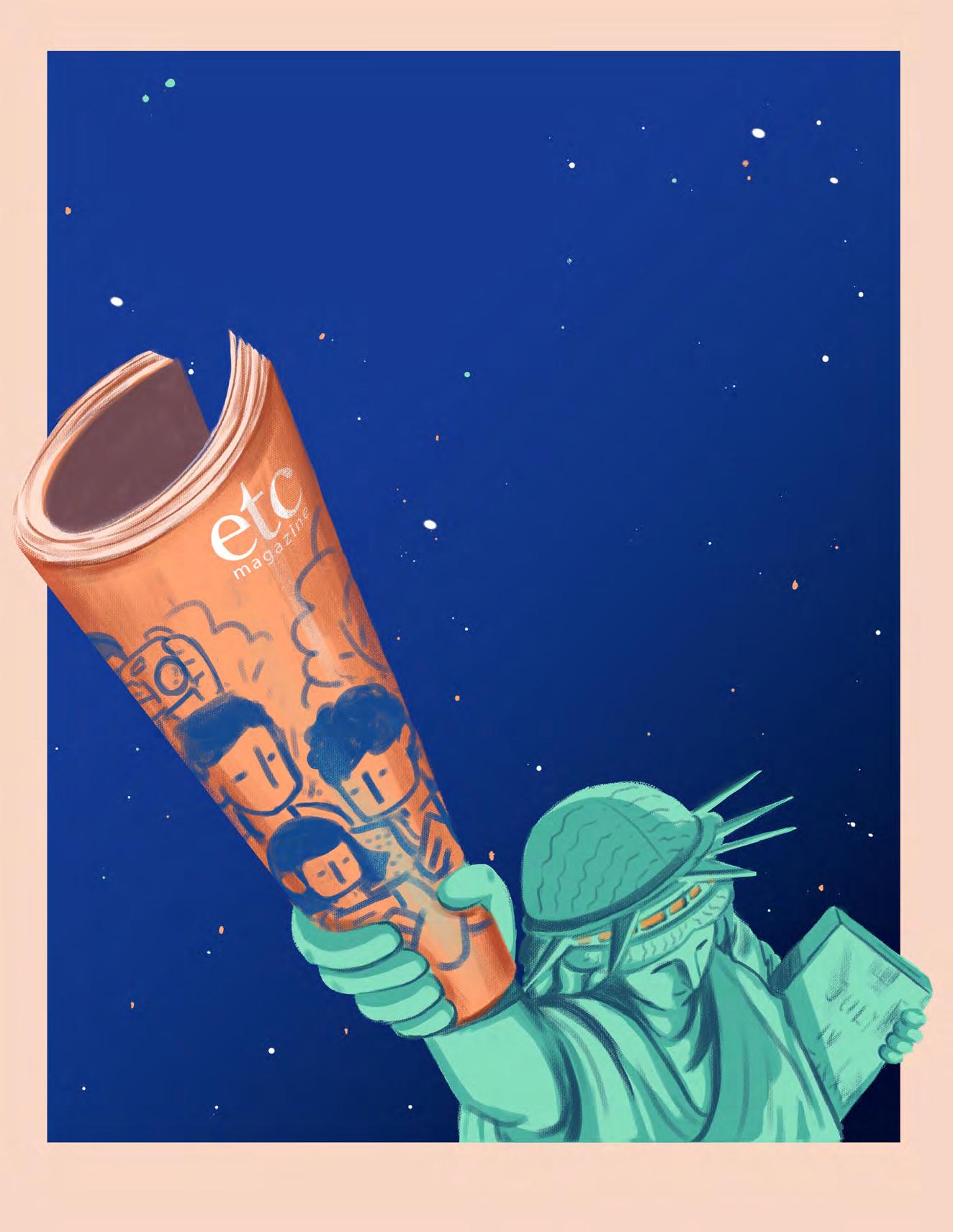

Magazine Editing & Production
Mondays 6:30 – 8:30pm
Fall & Spring Semesters
Mission Campus
























 Saekow works on a texture in nature study for a drawing assignment in Golden Gate Park. (Emily Trinh/Etc Magazine)
Saekow works on a texture in nature study for a drawing assignment in Golden Gate Park. (Emily Trinh/Etc Magazine)













 Story and photography by Melvin Wong
Story and photography by Melvin Wong









 Above: Pedemonte fixes her hair while a teammate chats in her ear after practice. Below: Pedemonte, left, dribbles the ball while being guarded by Maleah Evans, right, who was working defense.
Above: Pedemonte fixes her hair while a teammate chats in her ear after practice. Below: Pedemonte, left, dribbles the ball while being guarded by Maleah Evans, right, who was working defense.

 Story and photography by Xiaofan Fang
Story and photography by Xiaofan Fang






 Story by Megan Ogle
Photography by Bo Lenschau Illustration by Bobby Ramirez
Story by Megan Ogle
Photography by Bo Lenschau Illustration by Bobby Ramirez



 Alimentari sells their own Italian-inspired pantry products including sauces, pastas, cocktails and deserts to generate another stream of income.
Alimentari sells their own Italian-inspired pantry products including sauces, pastas, cocktails and deserts to generate another stream of income.




 Story by Connie Chu
Story by Connie Chu



 Lisa Booker deposits books in the book drop at the Rosenberg Library. She had borrowed them through the library’s curbside checkout program.
Lisa Booker deposits books in the book drop at the Rosenberg Library. She had borrowed them through the library’s curbside checkout program.








